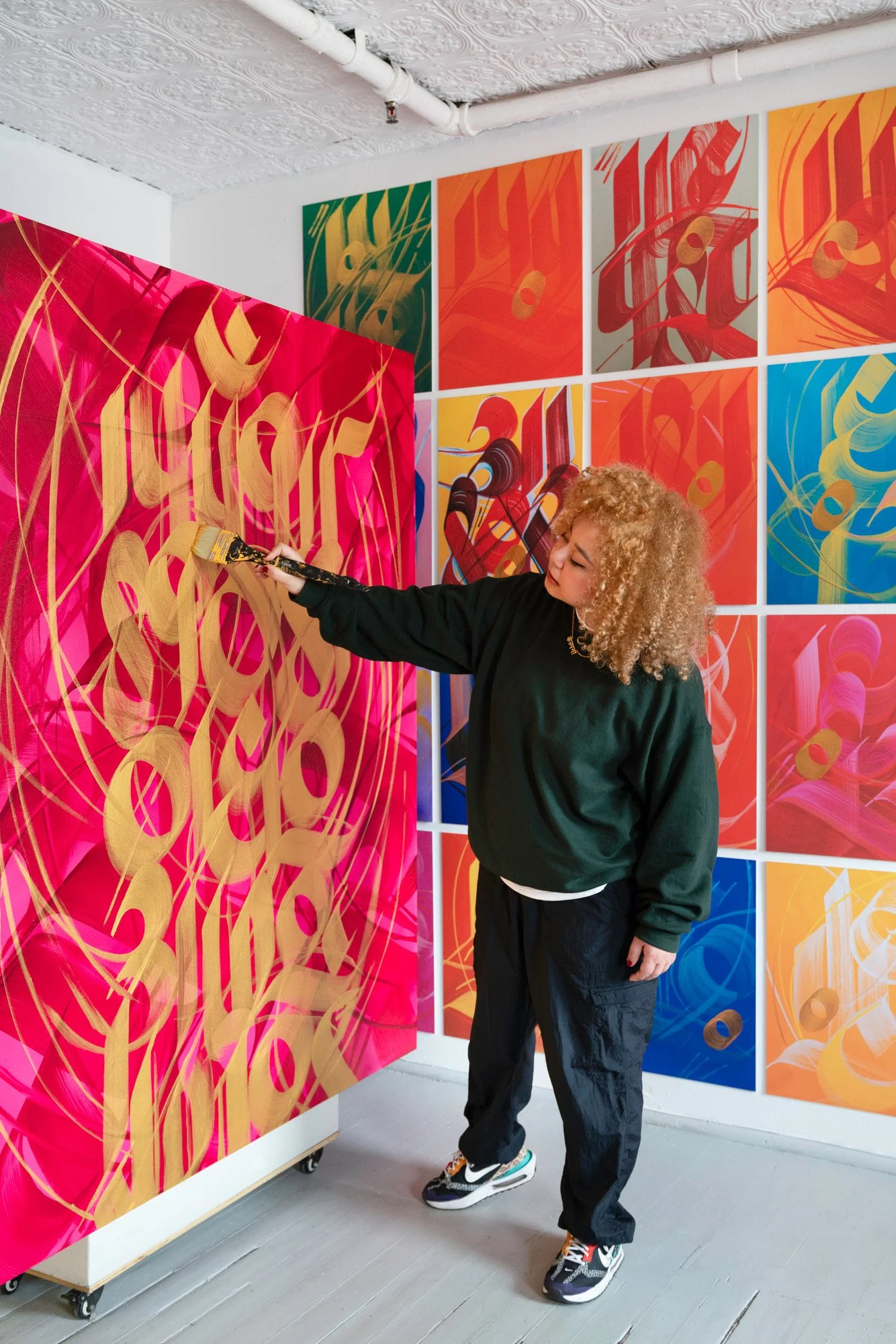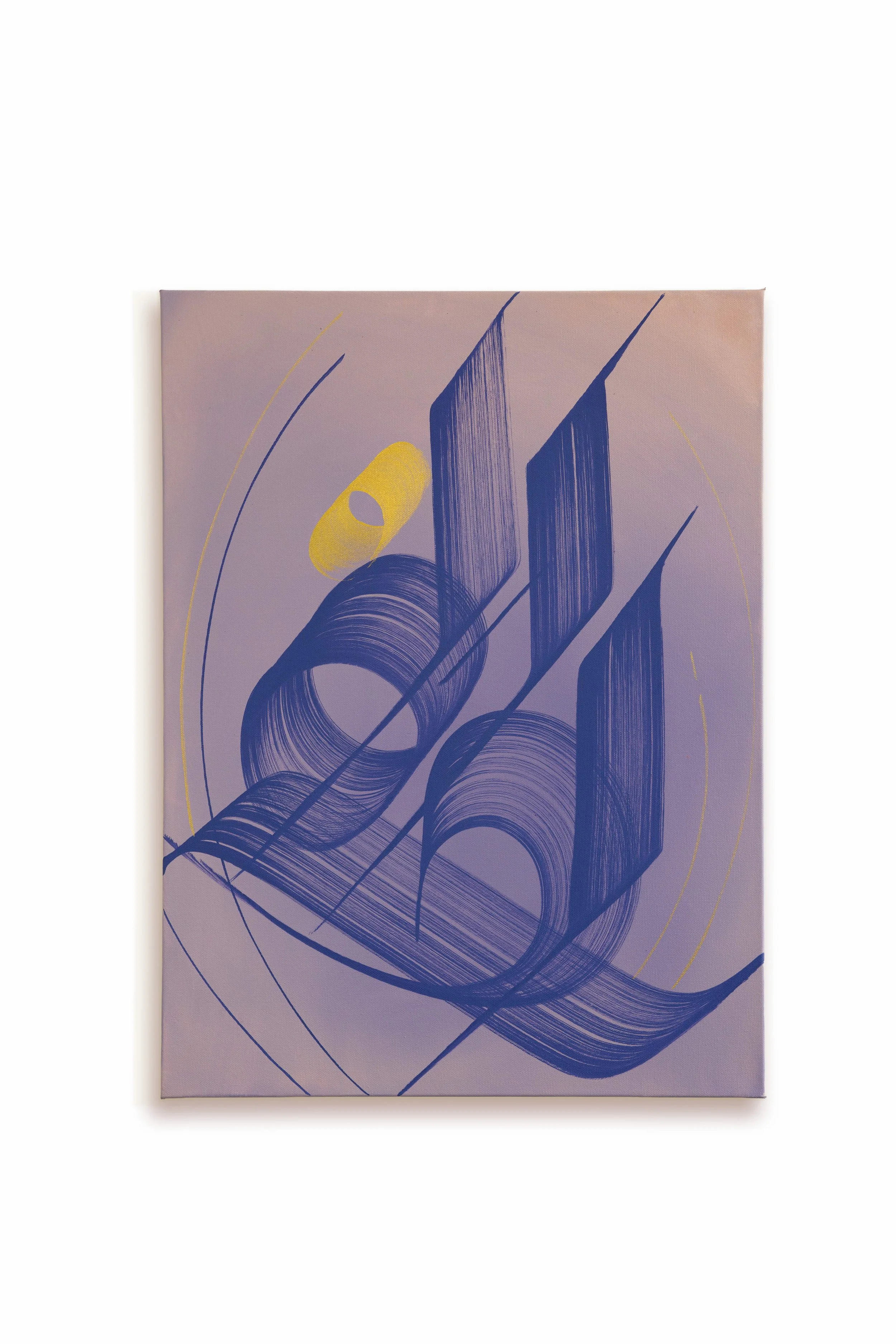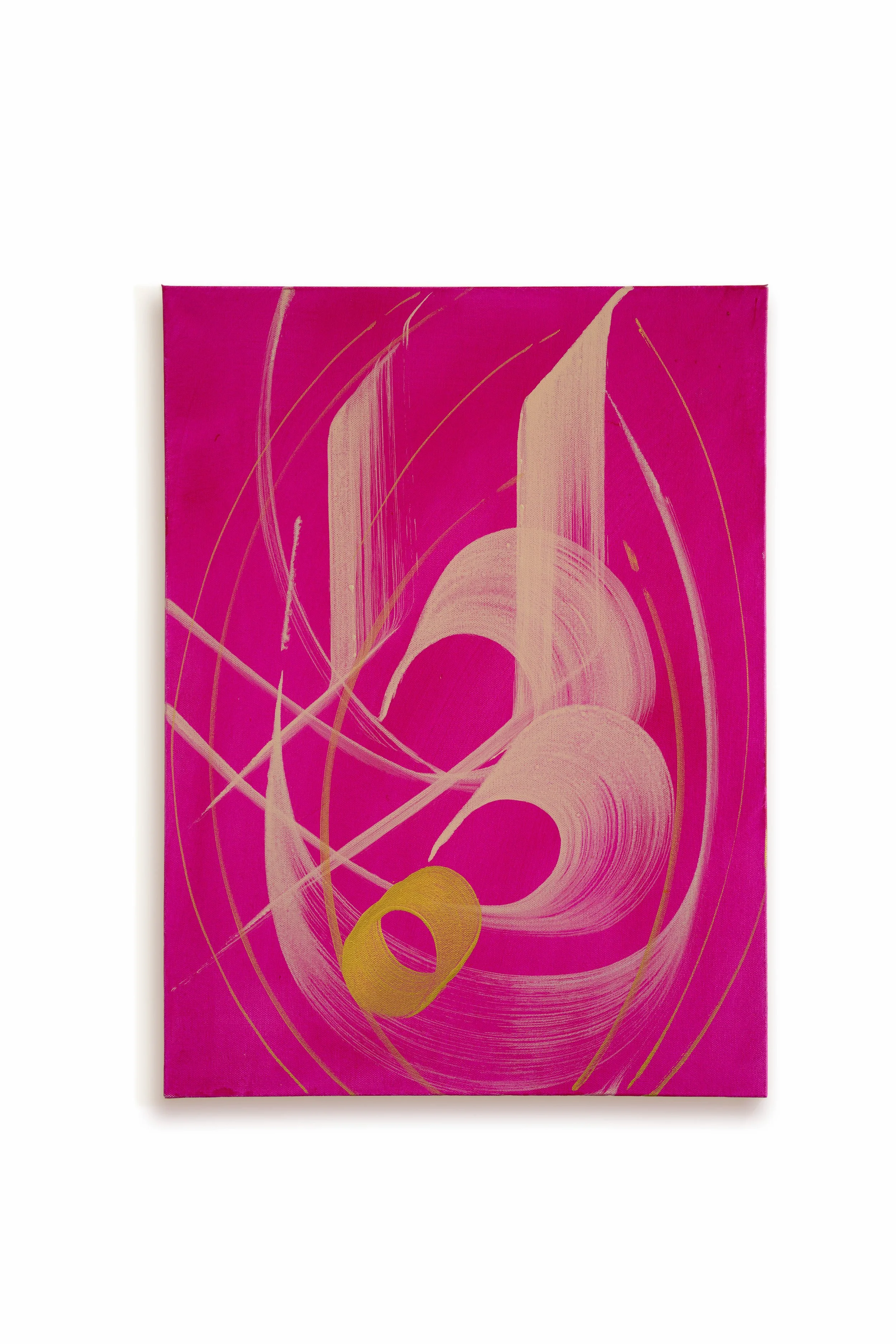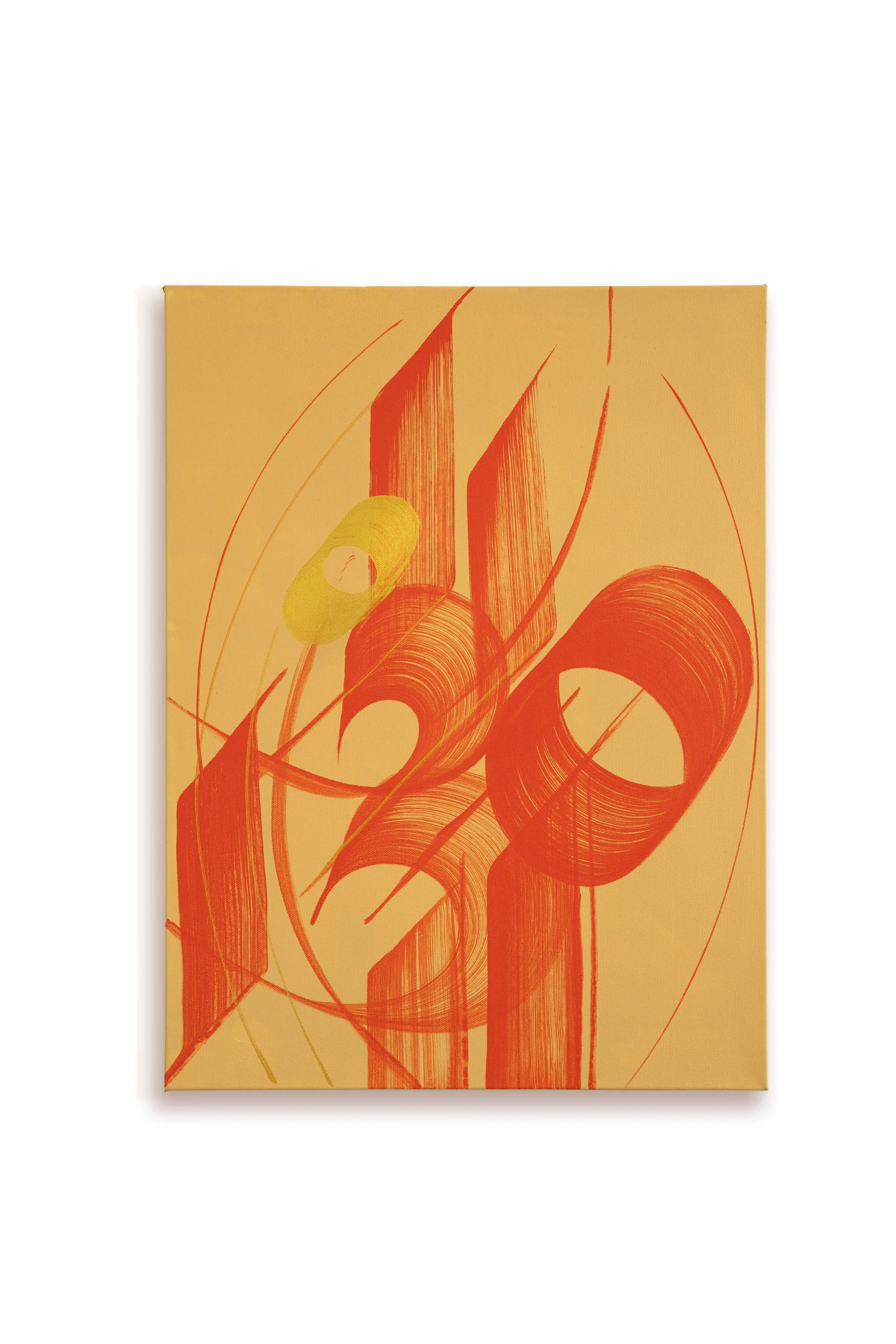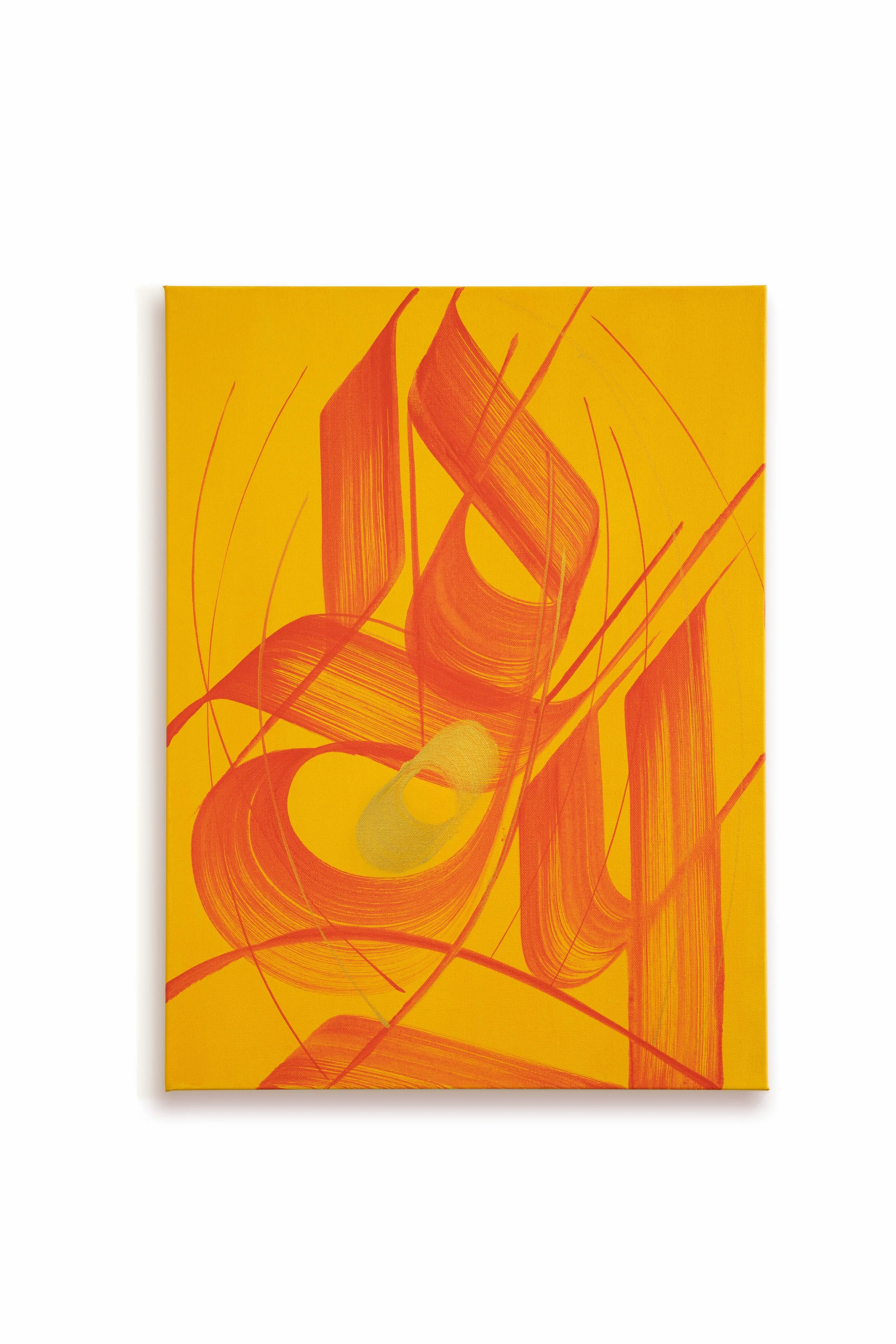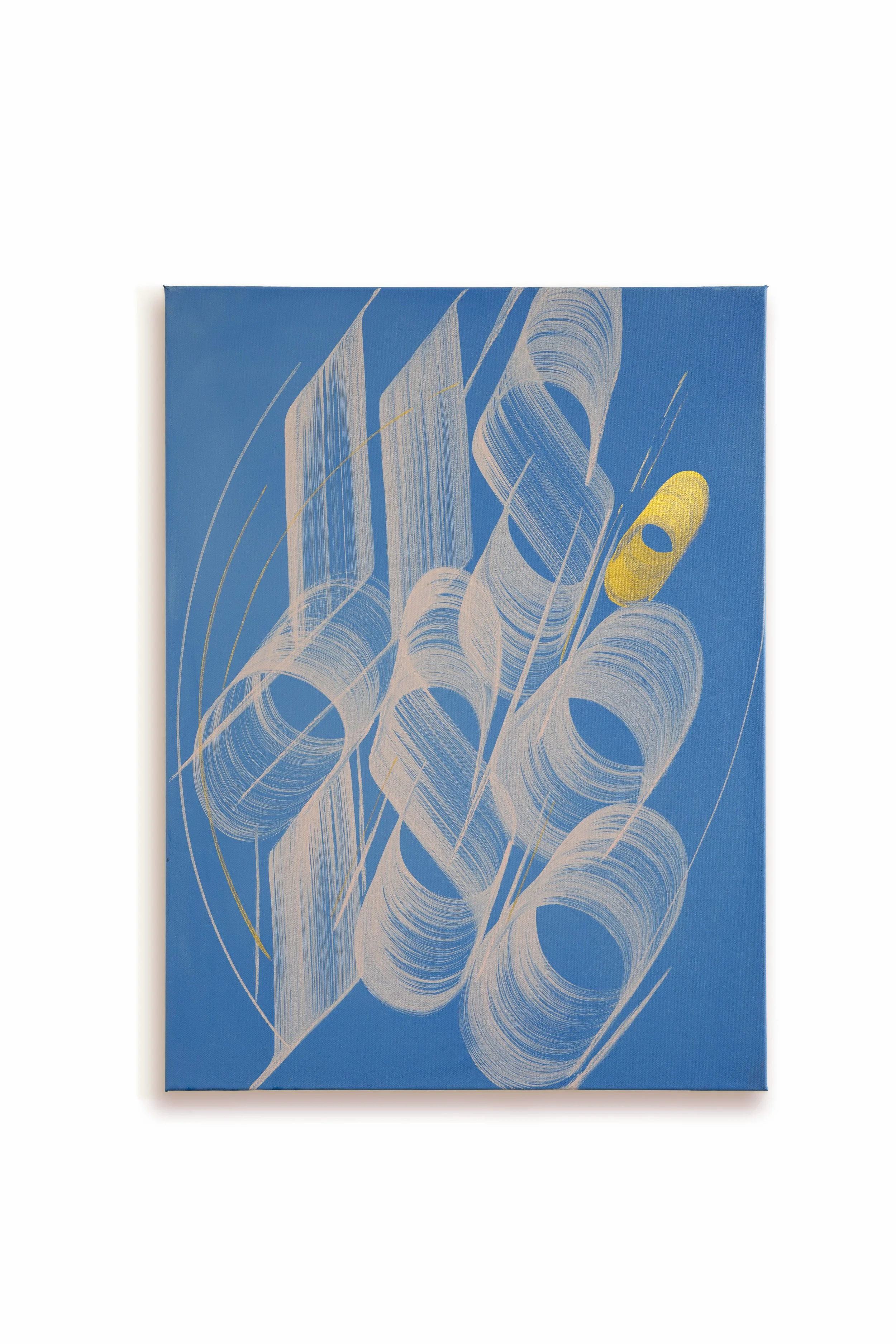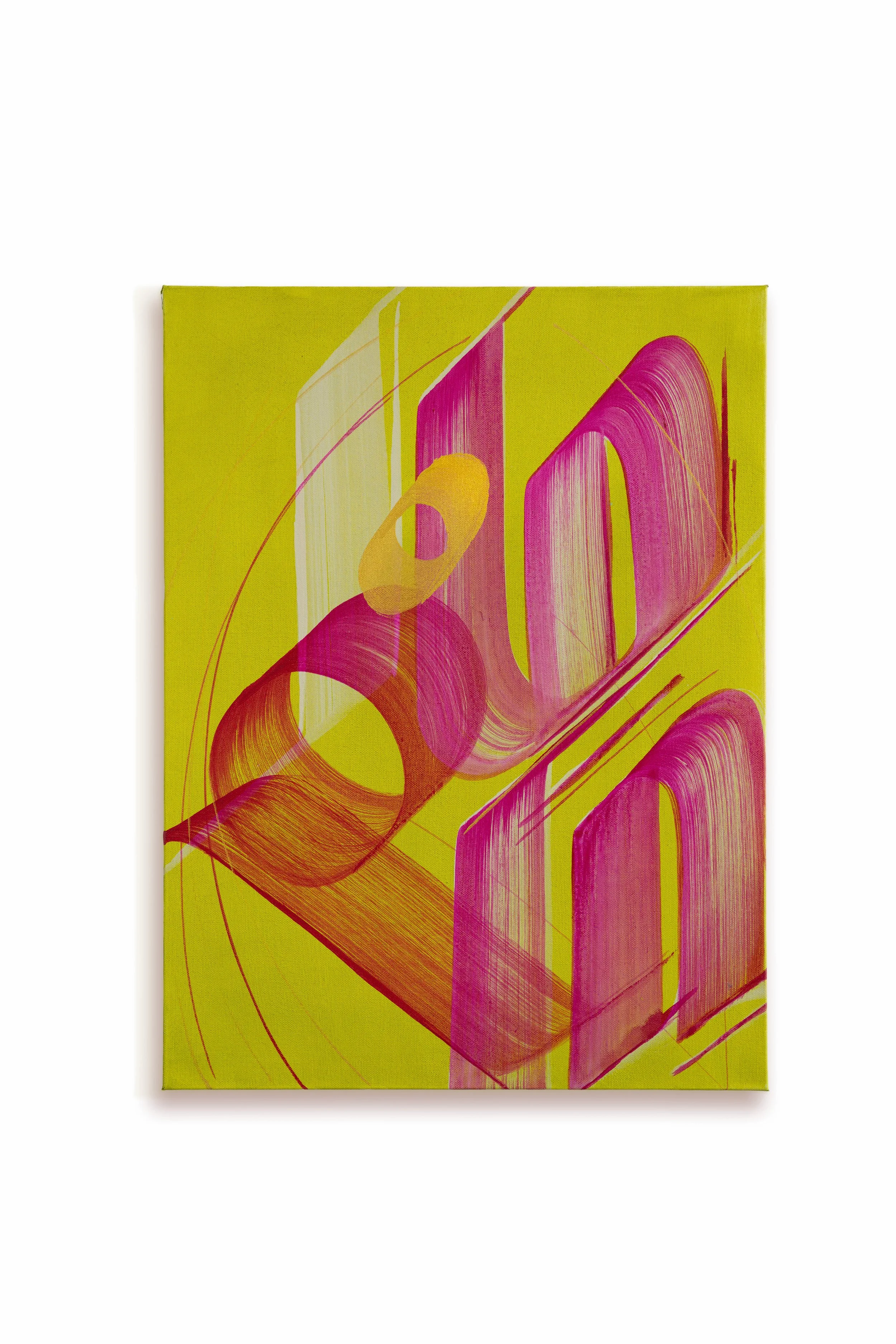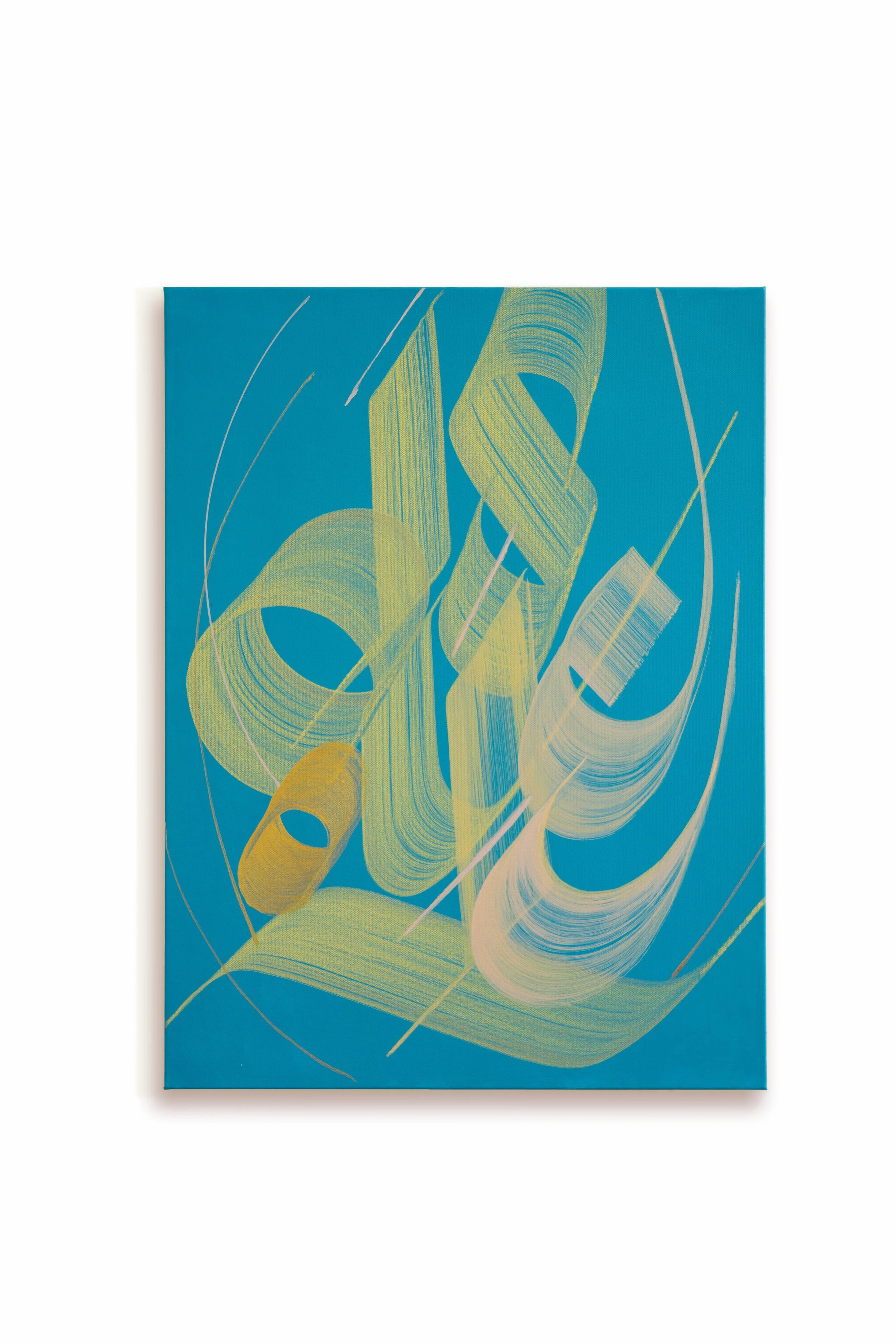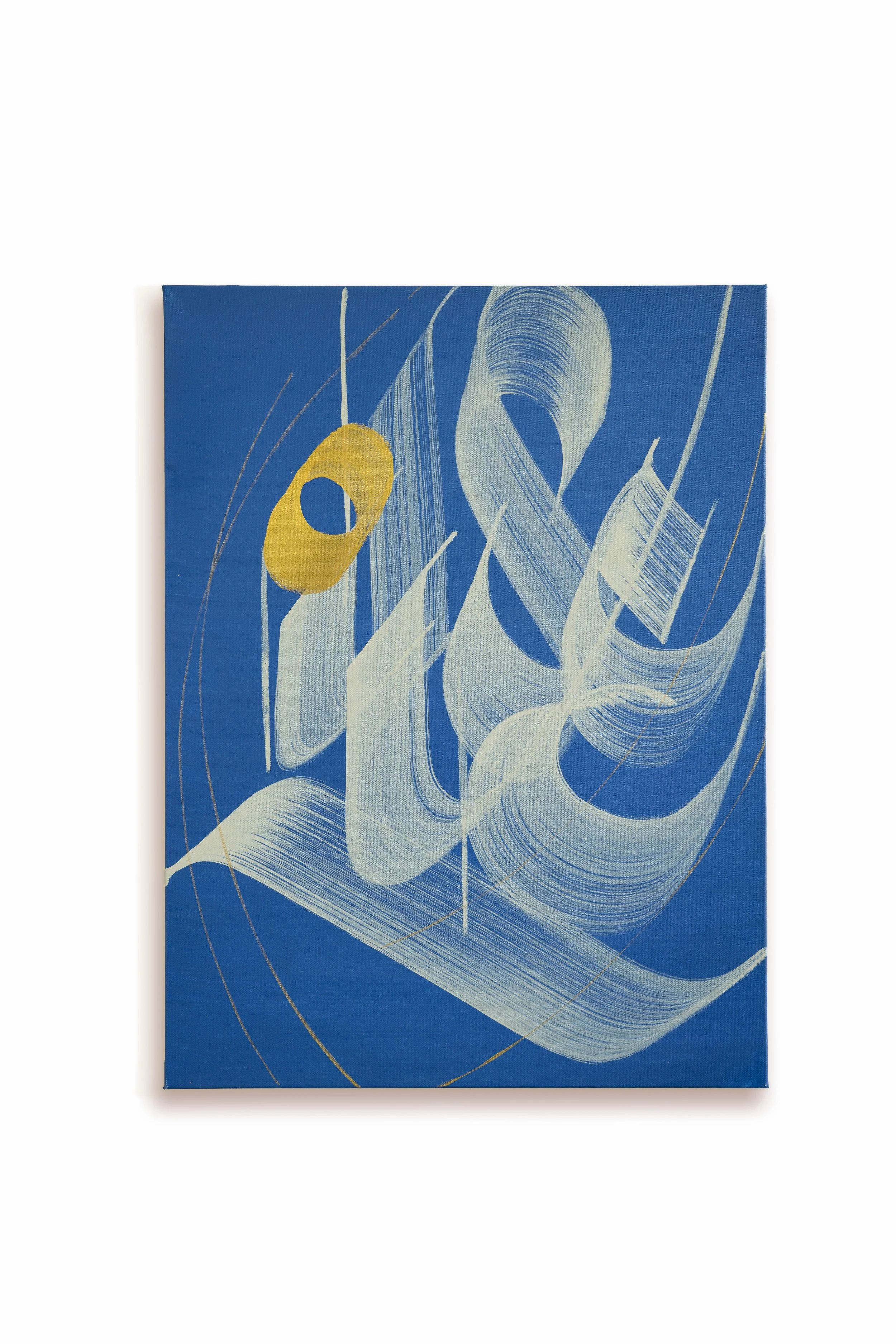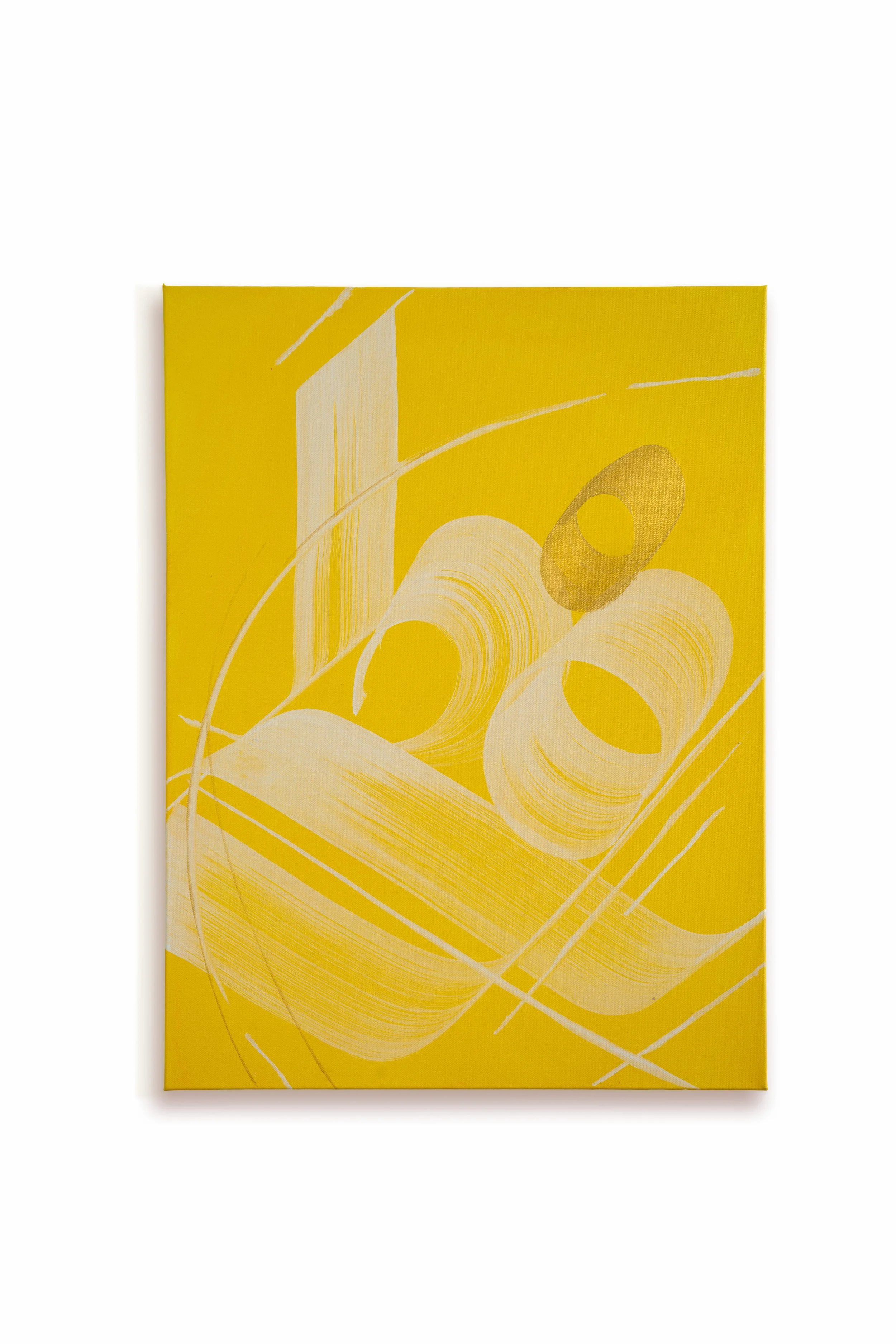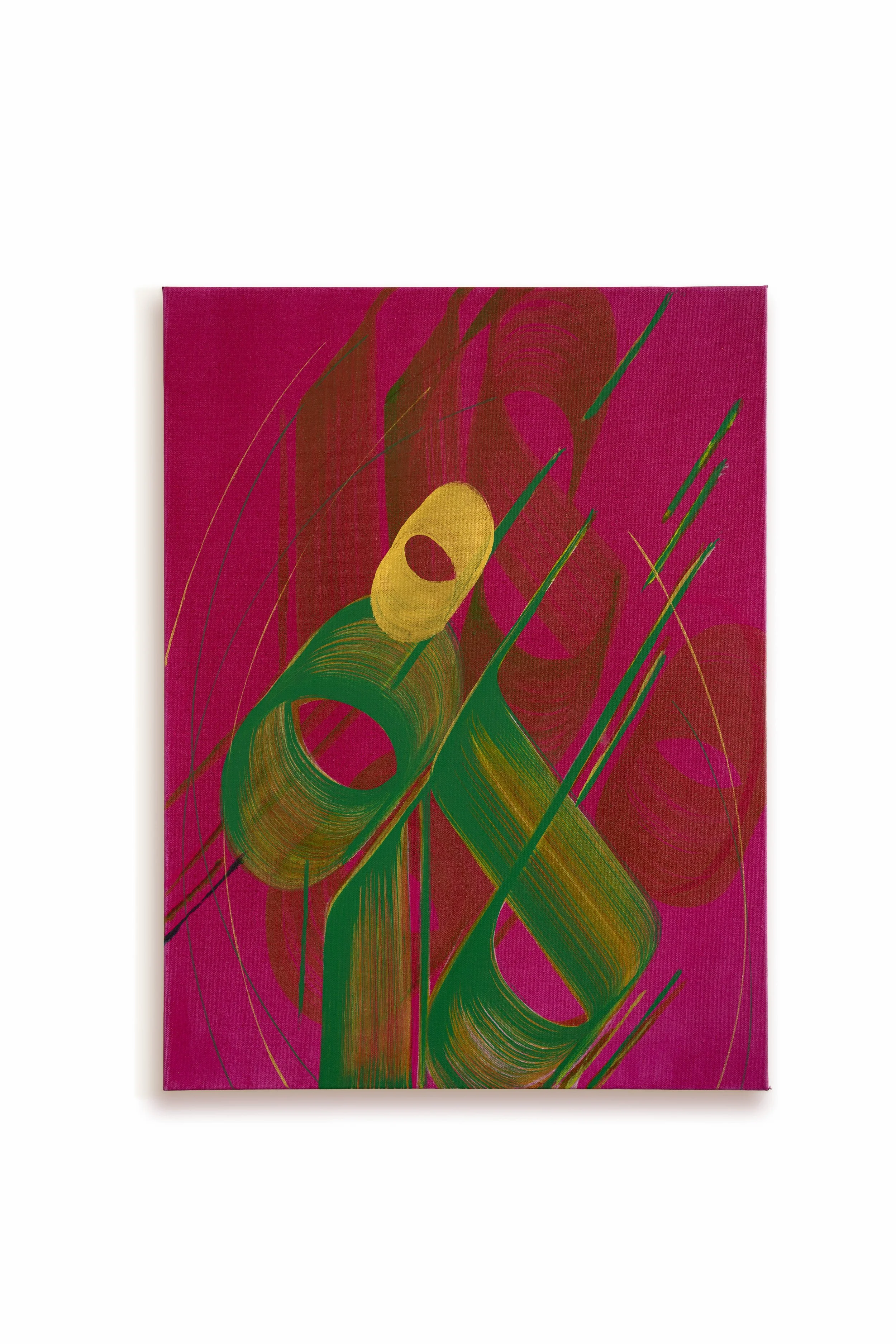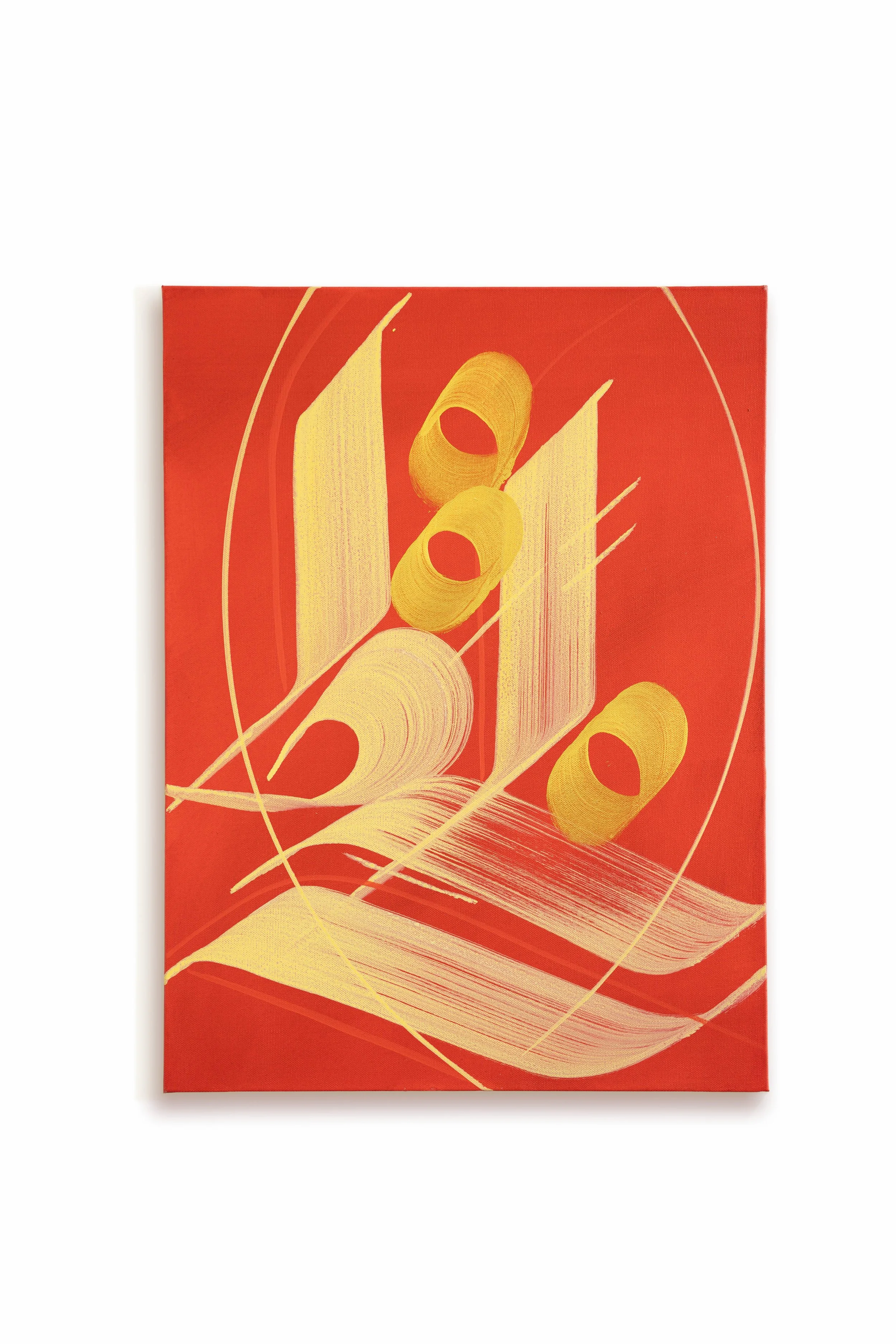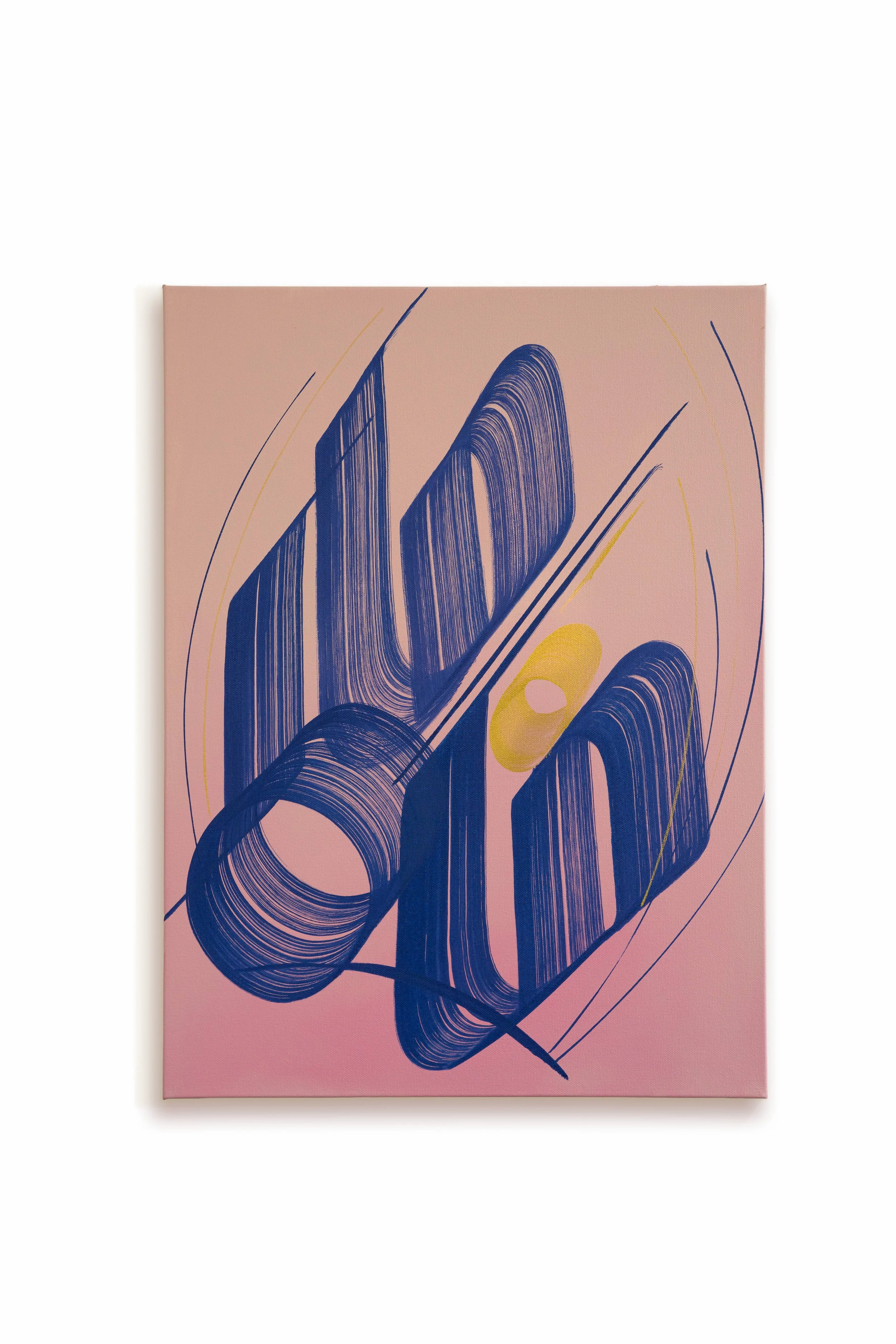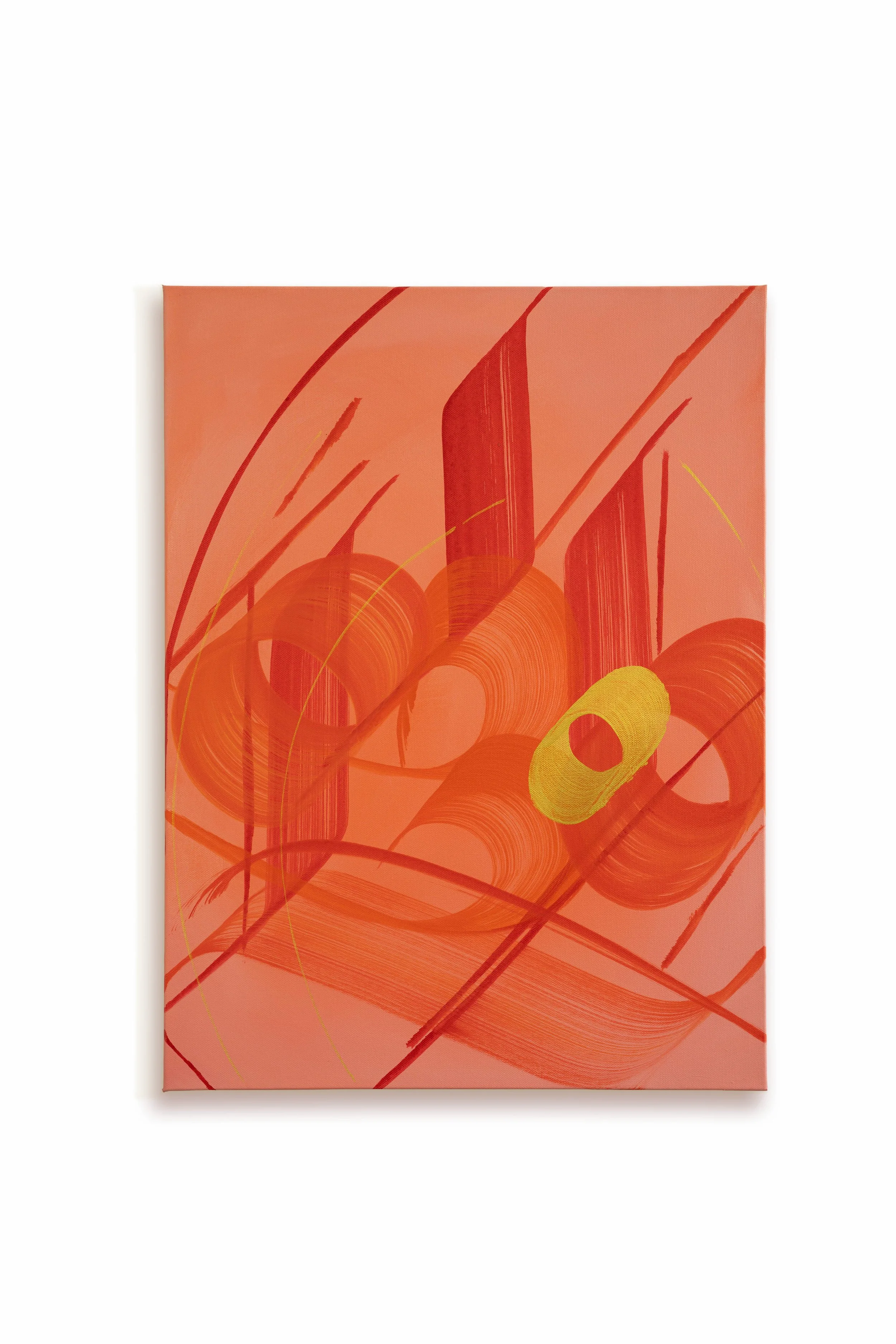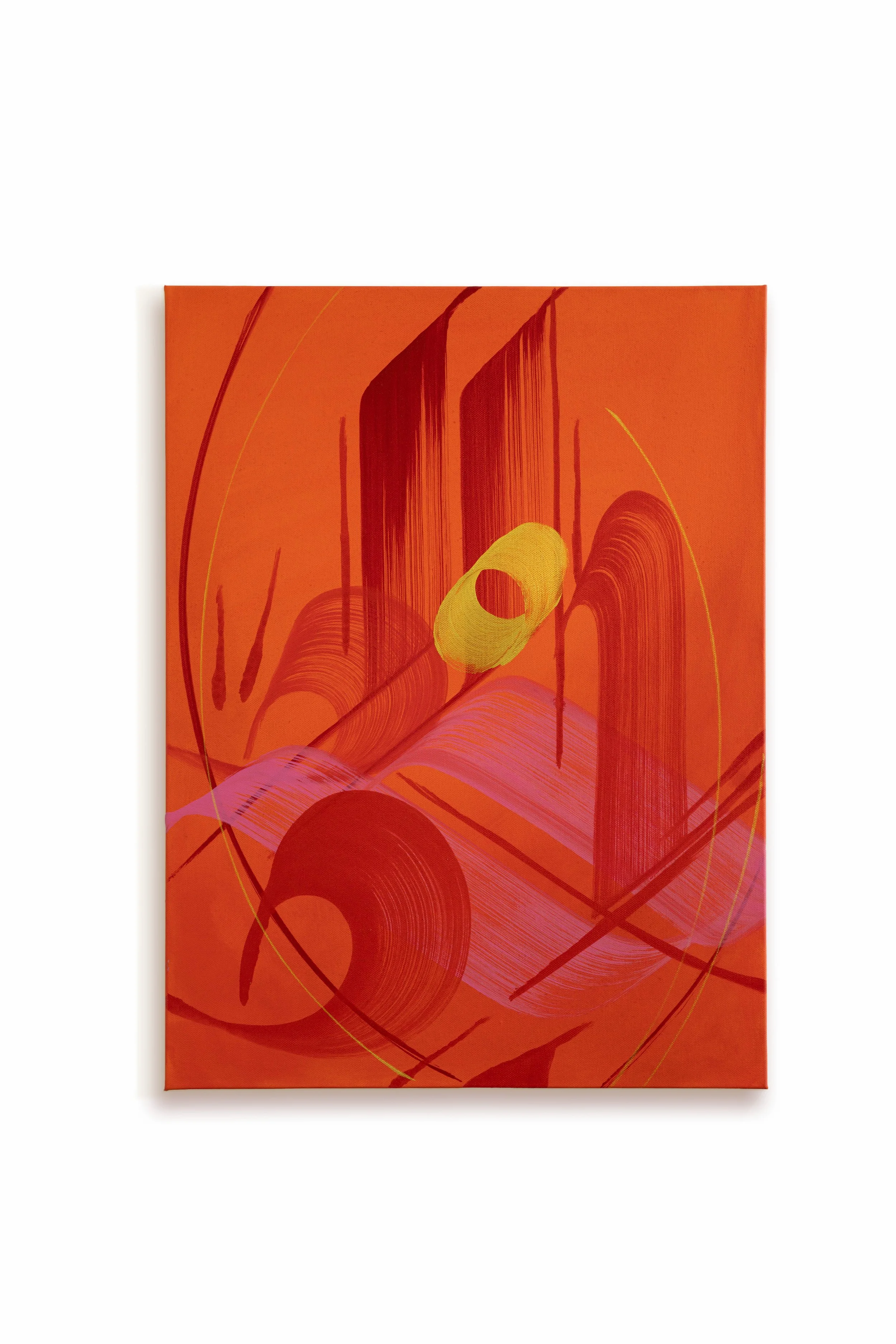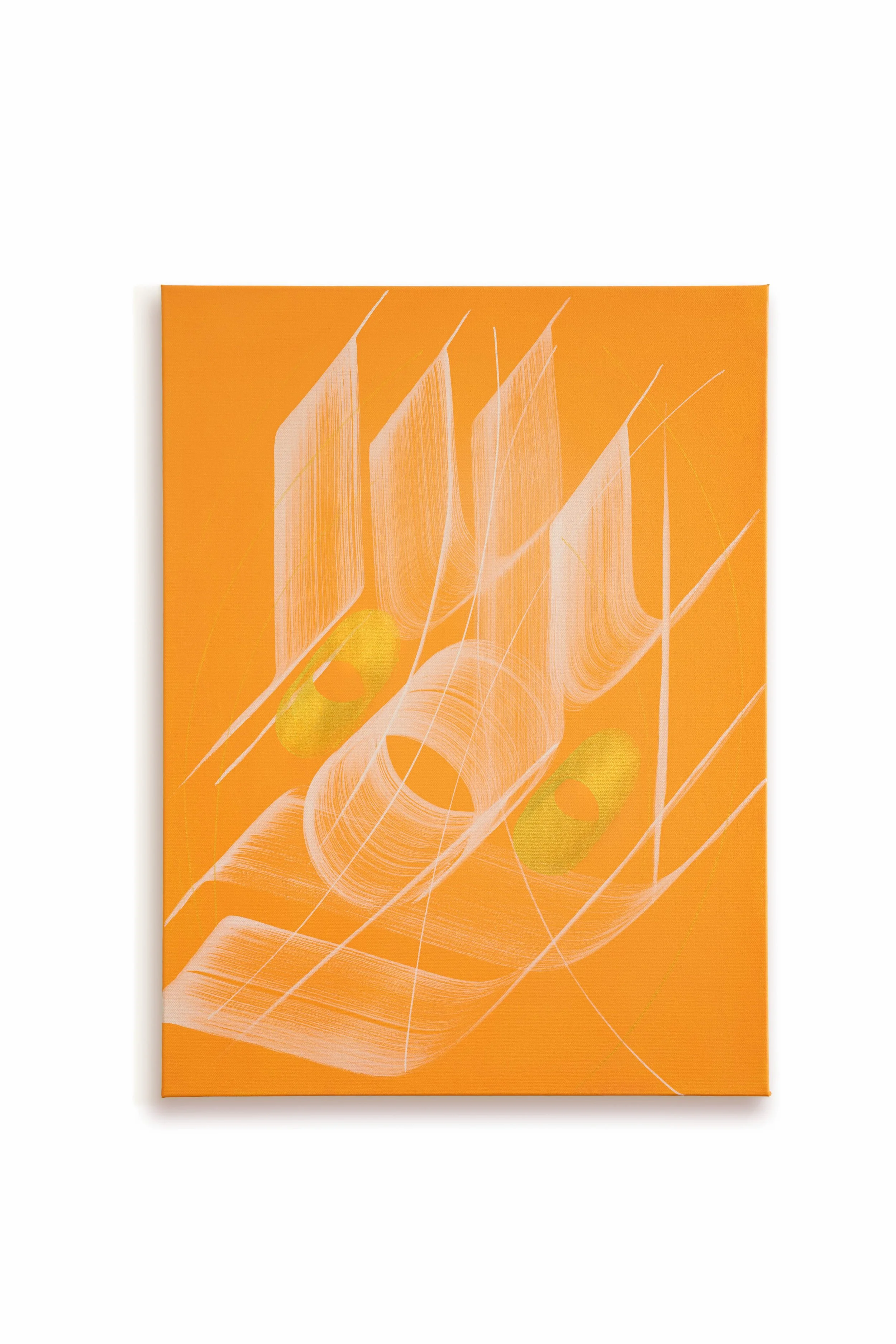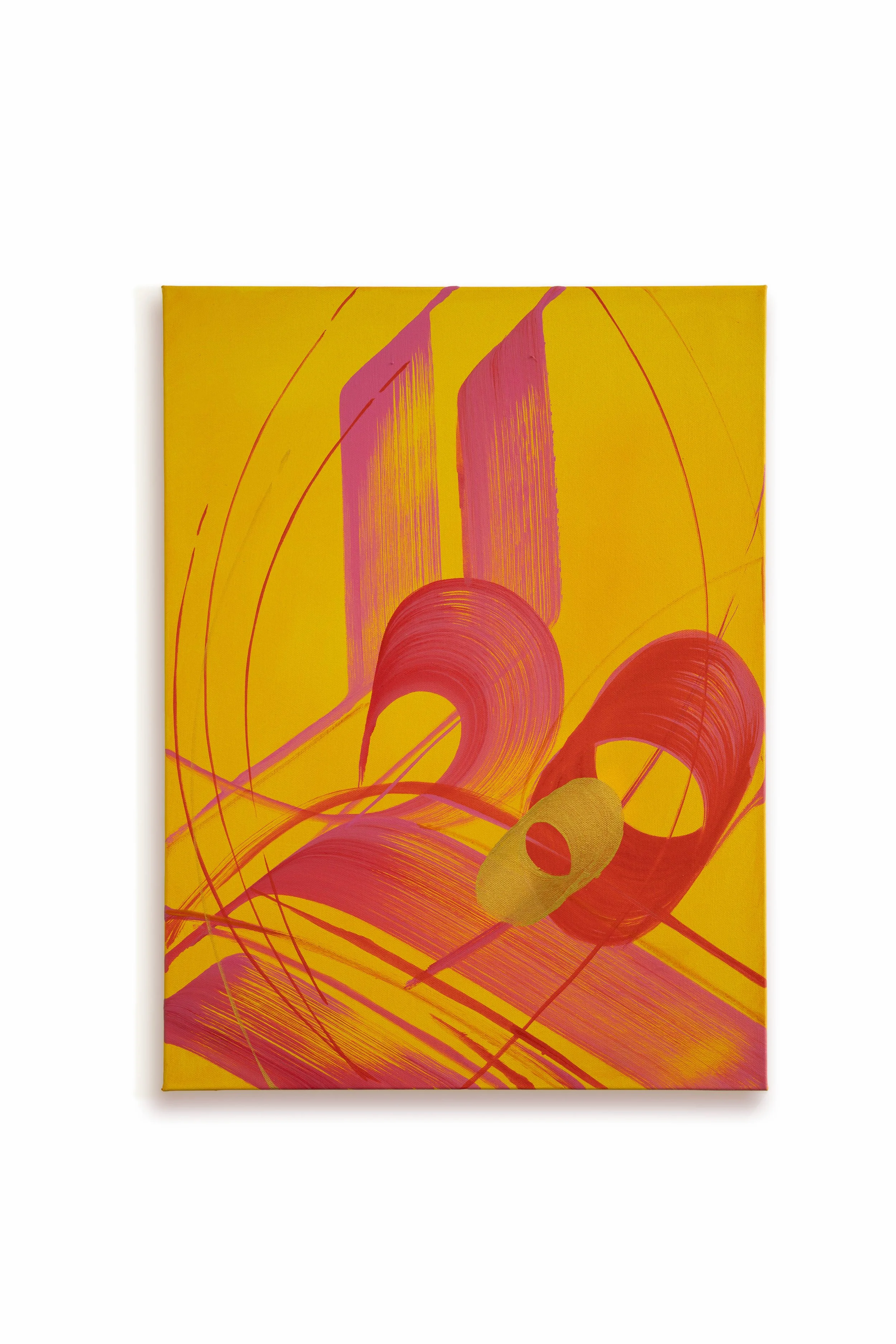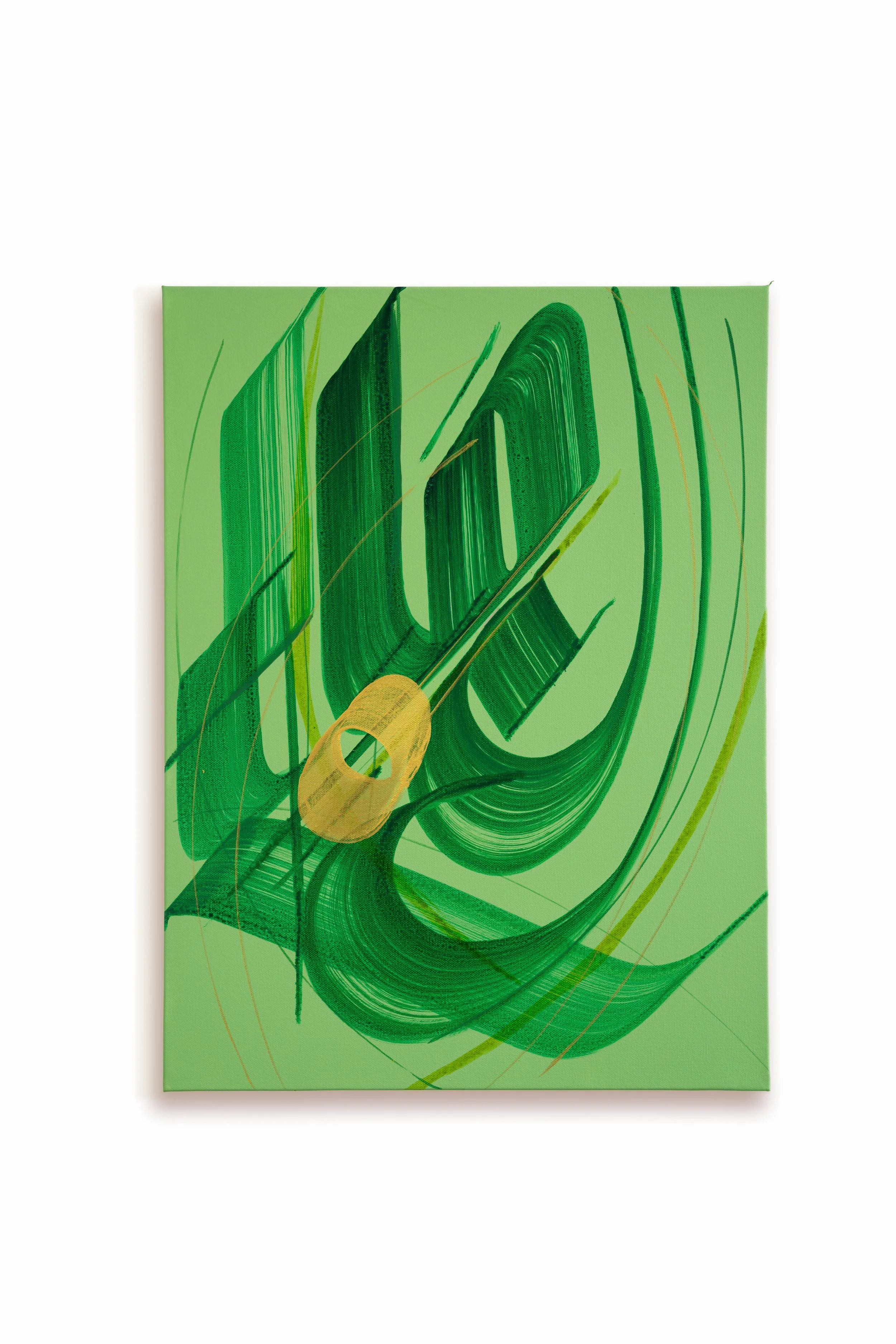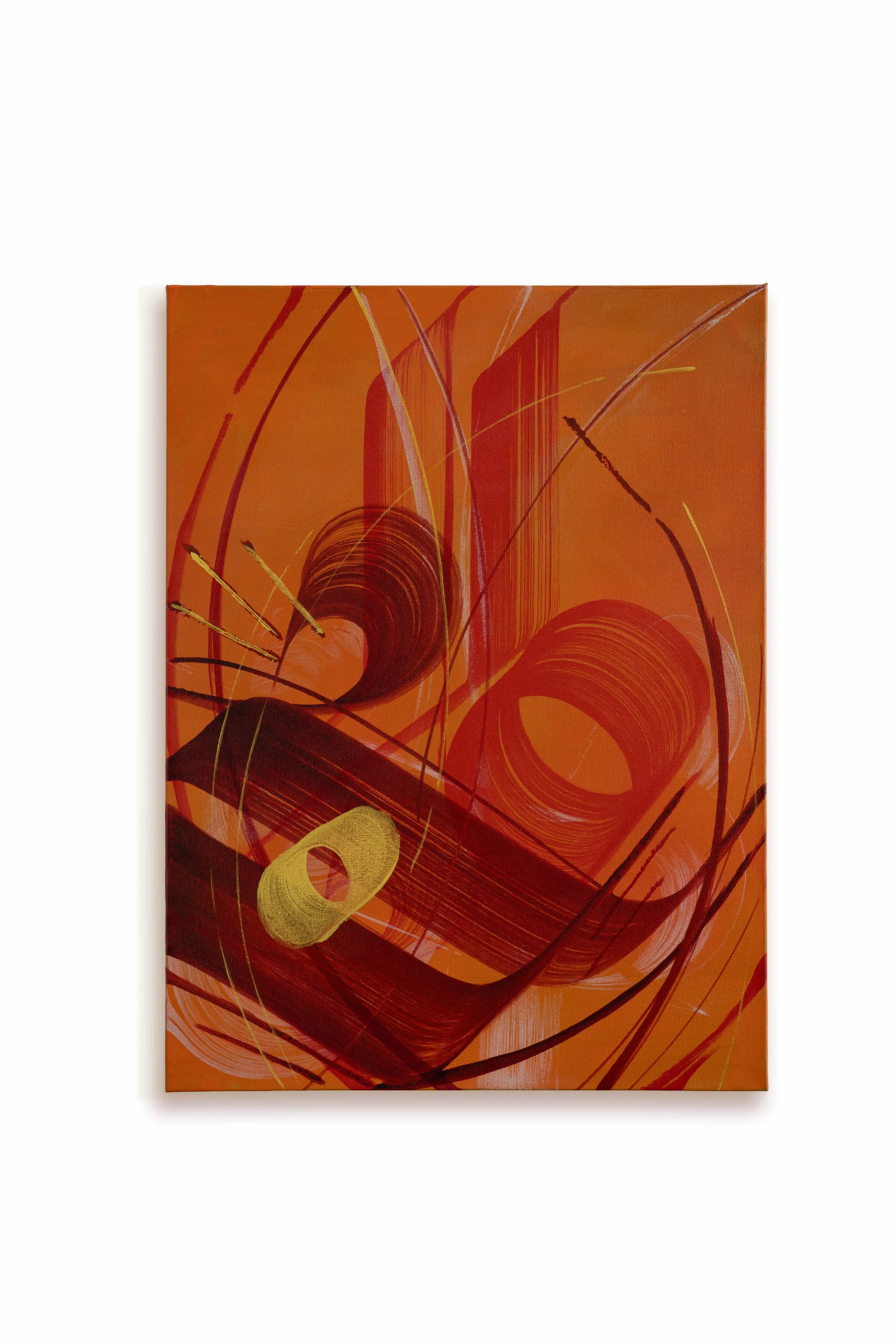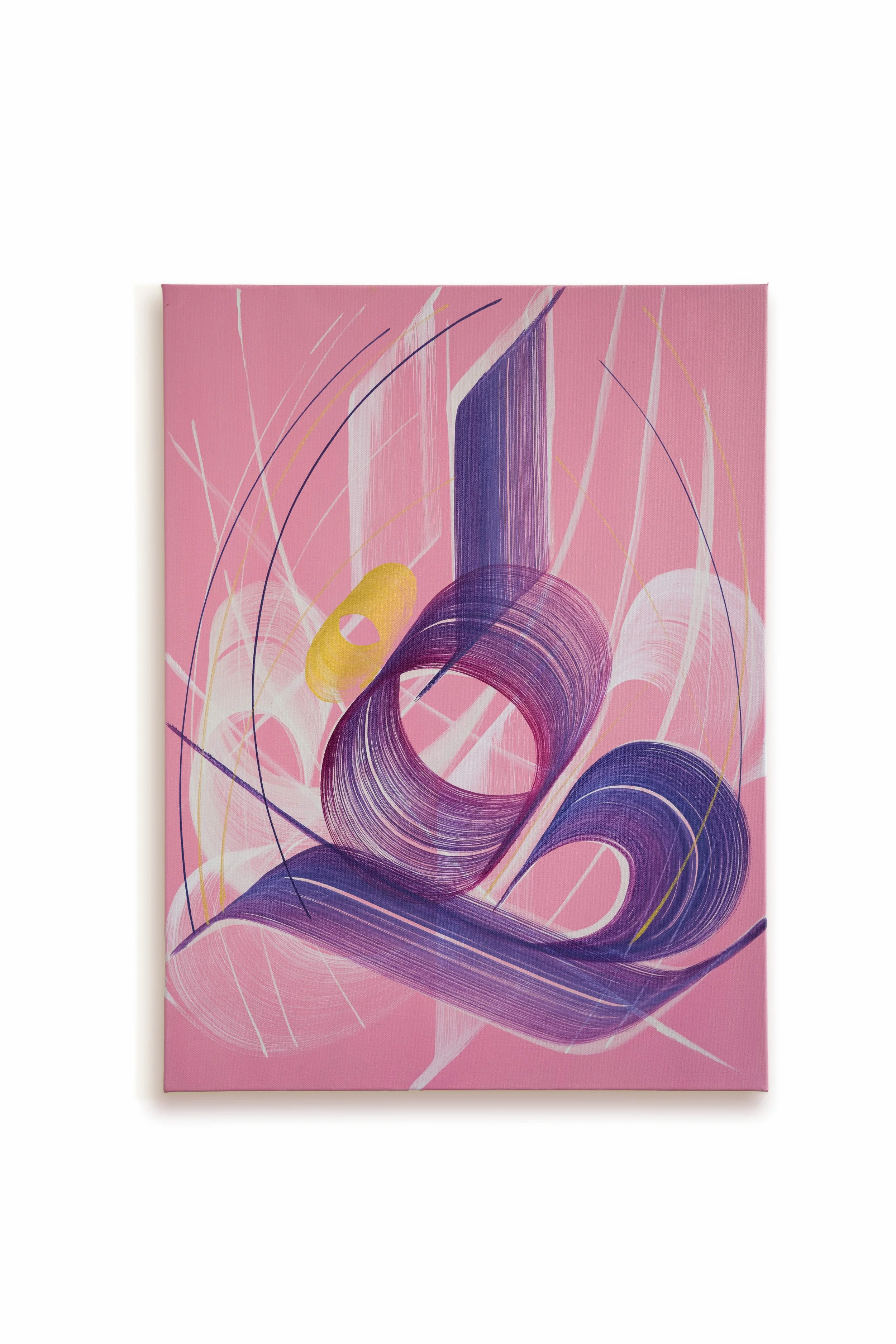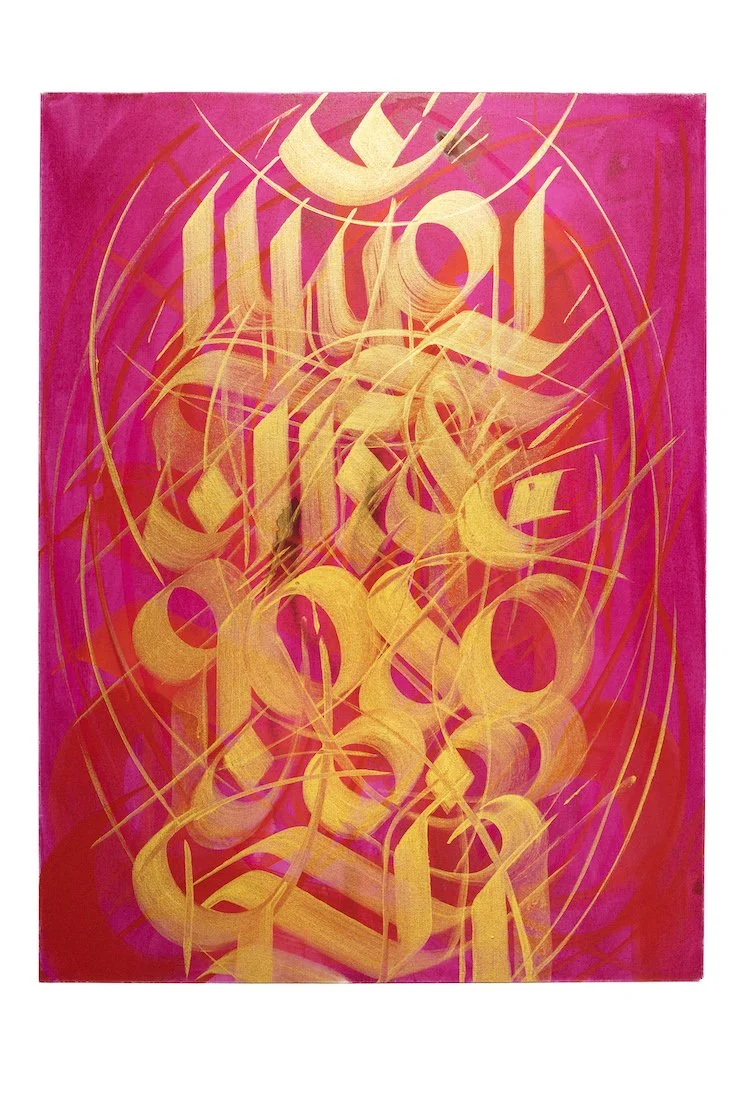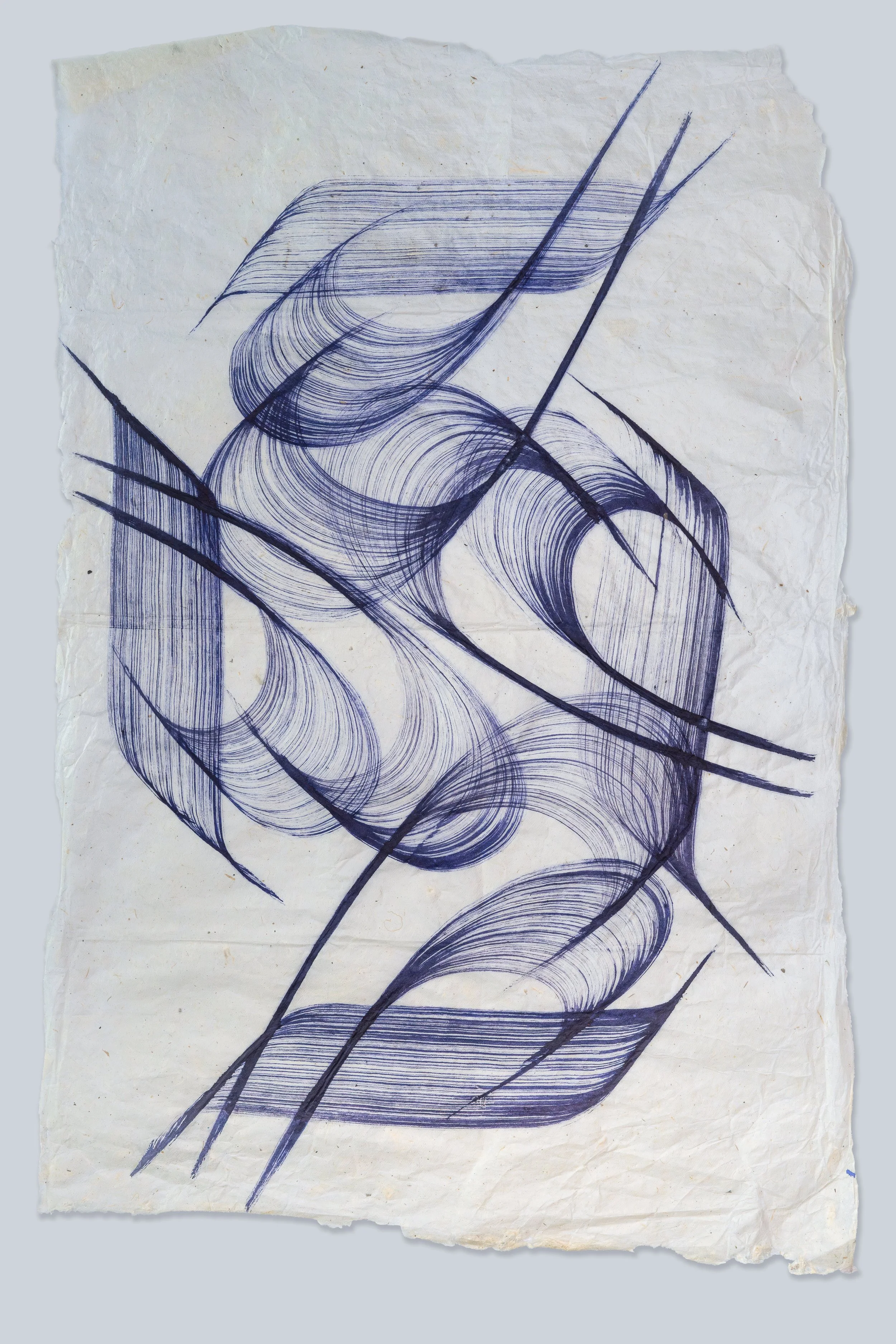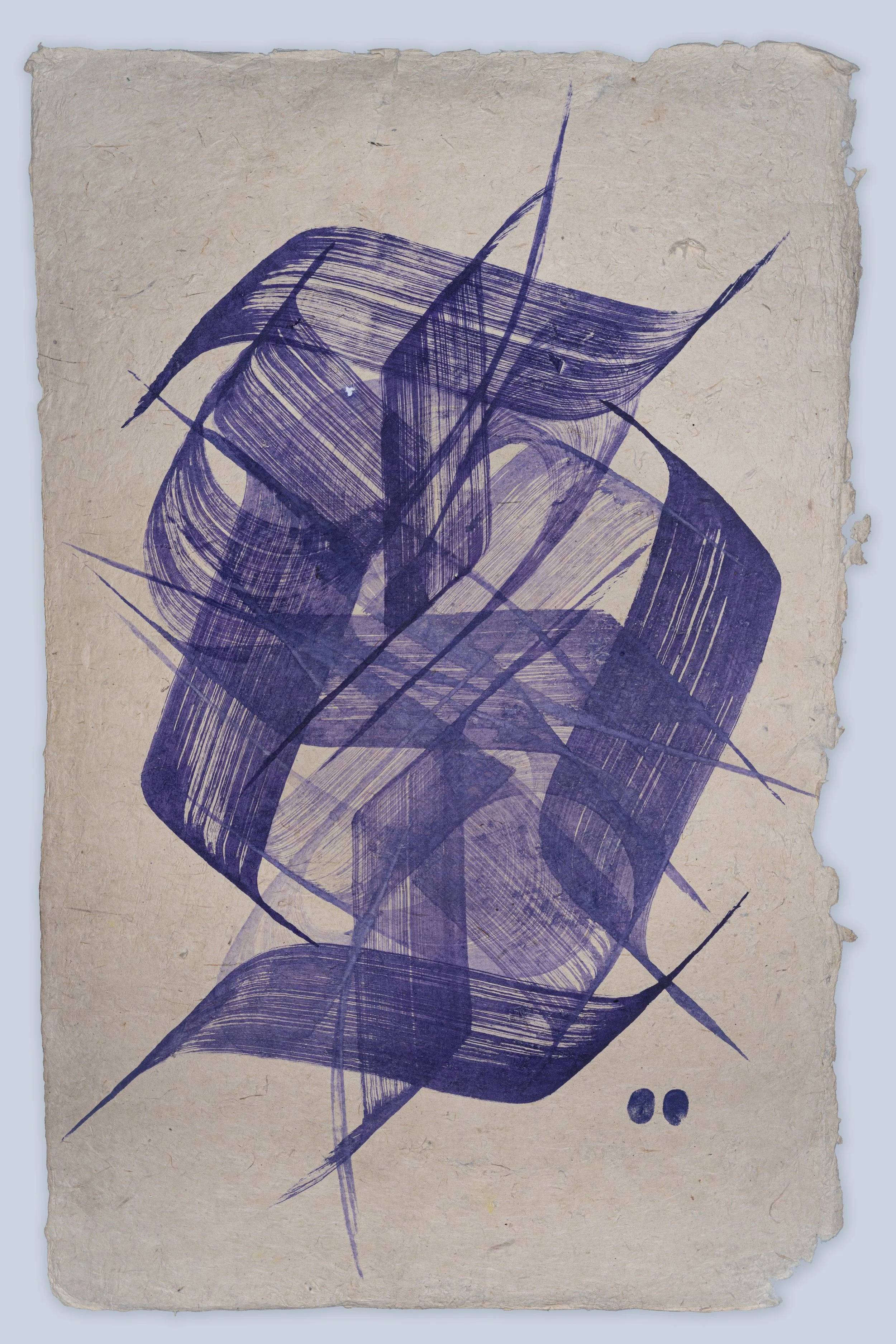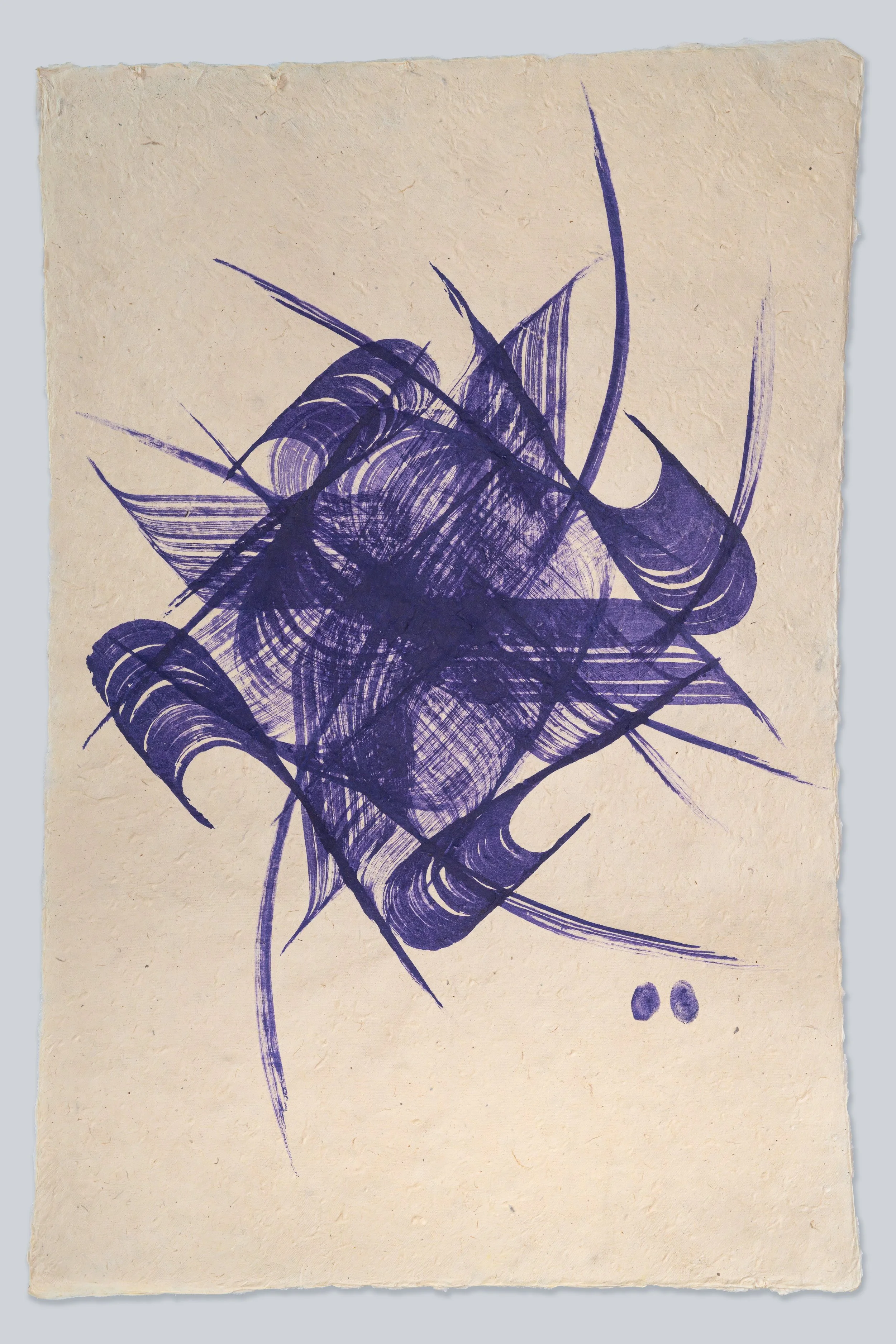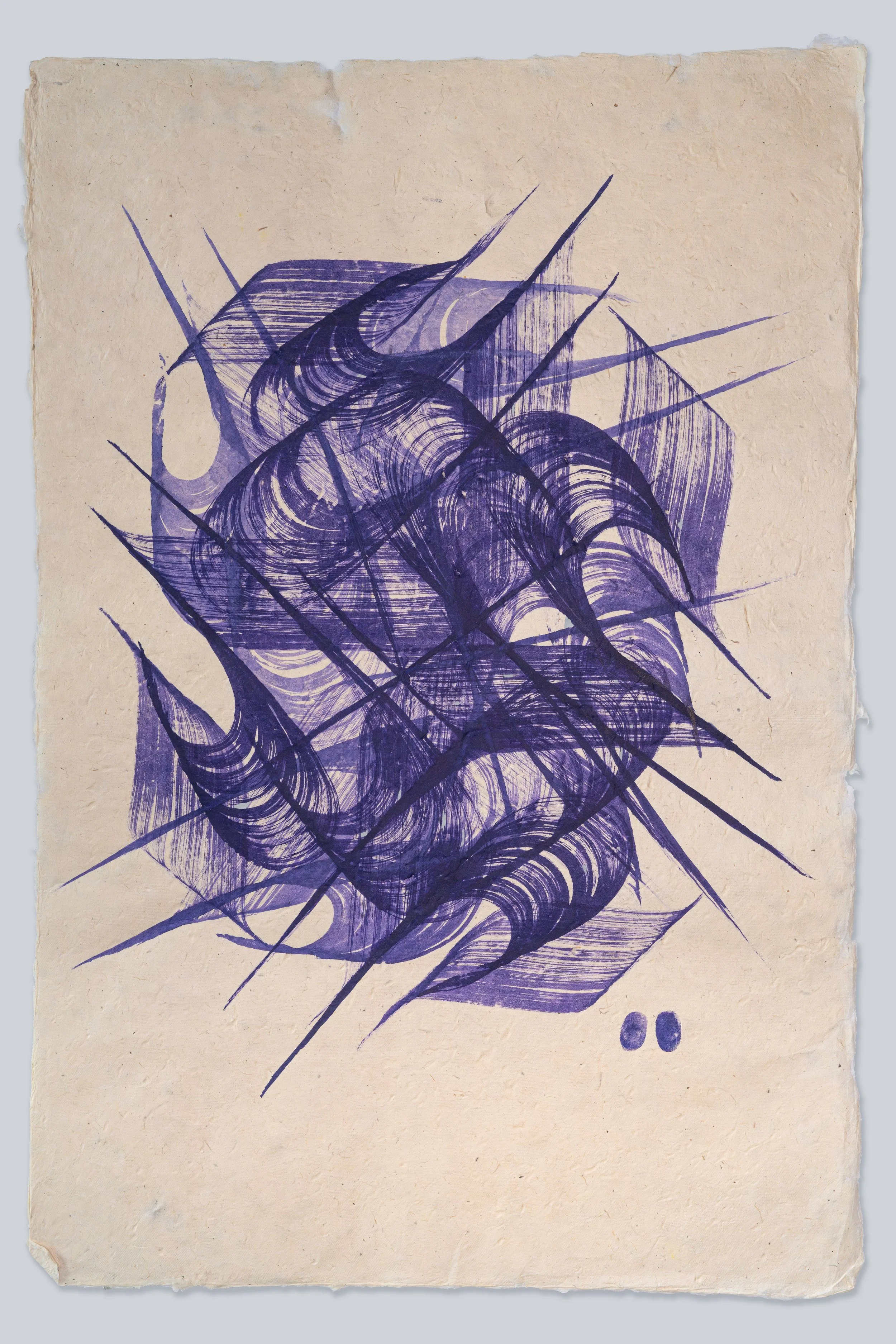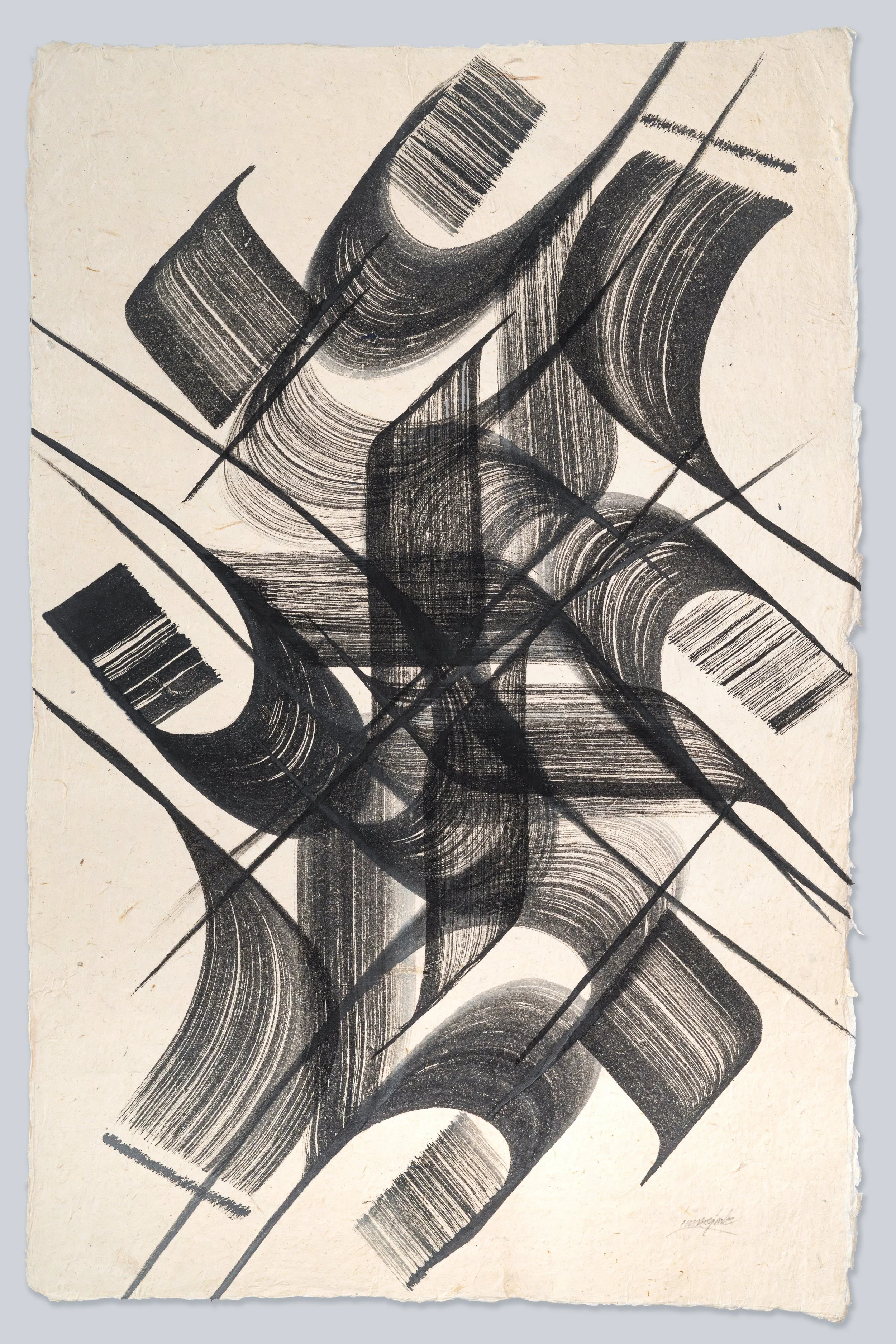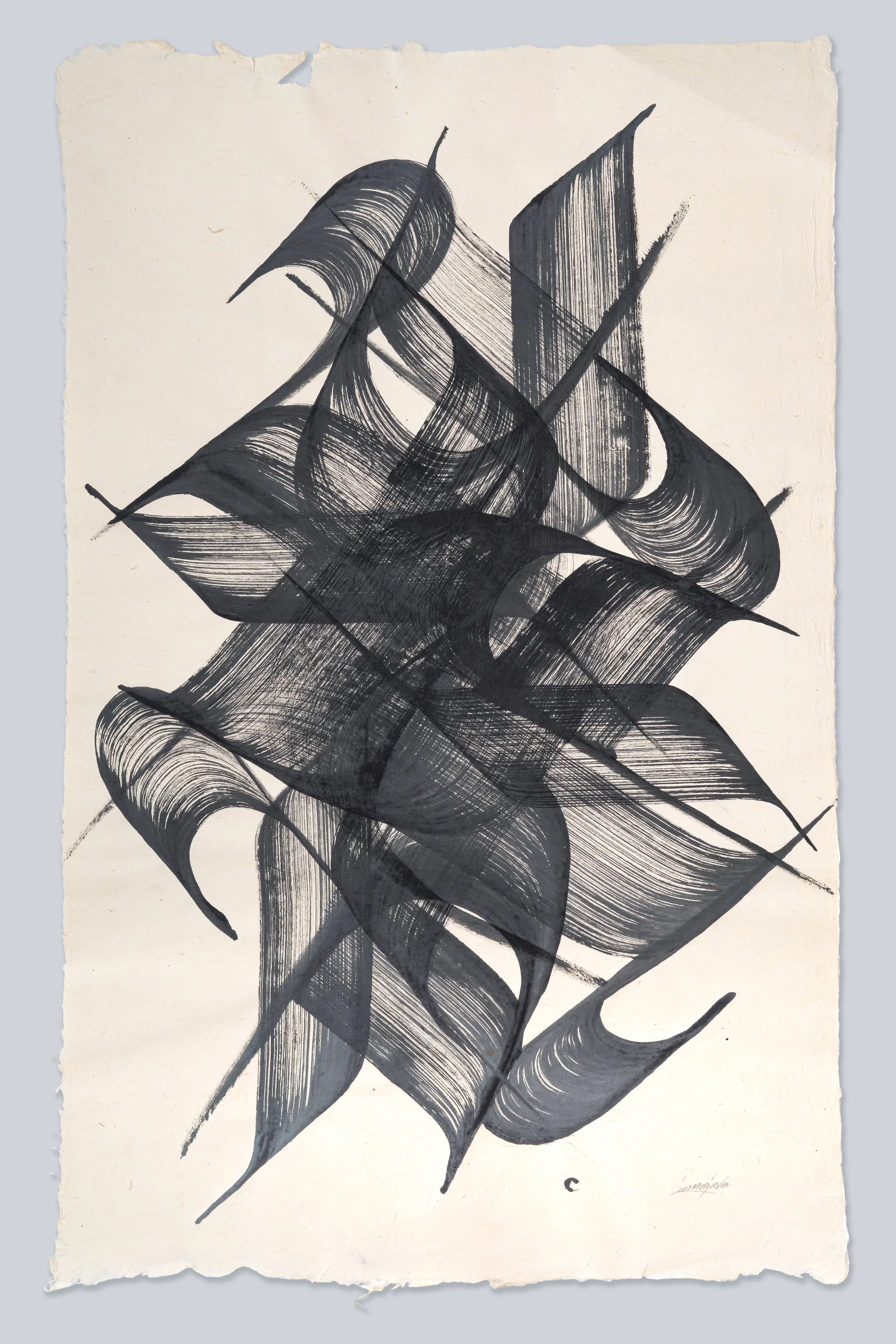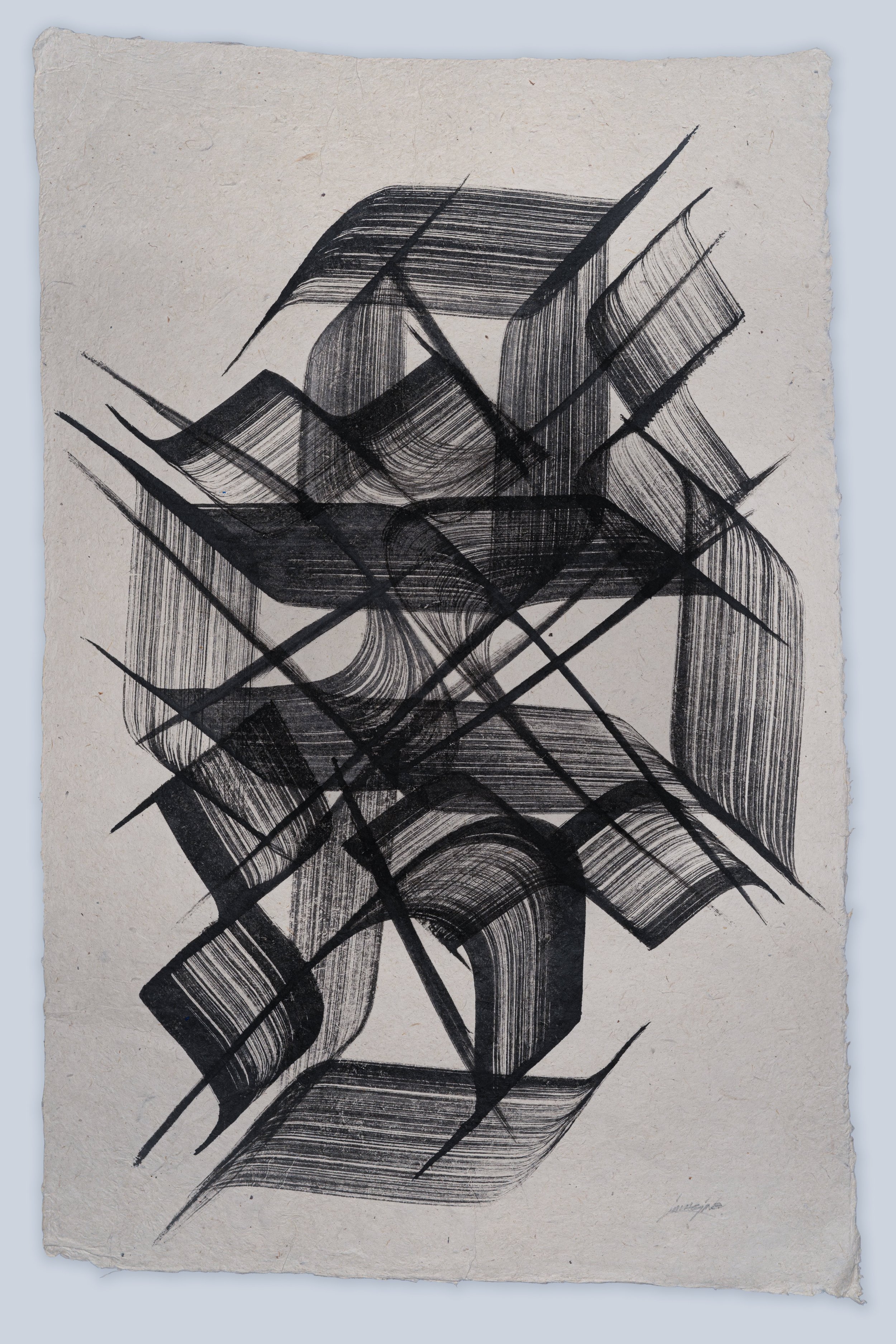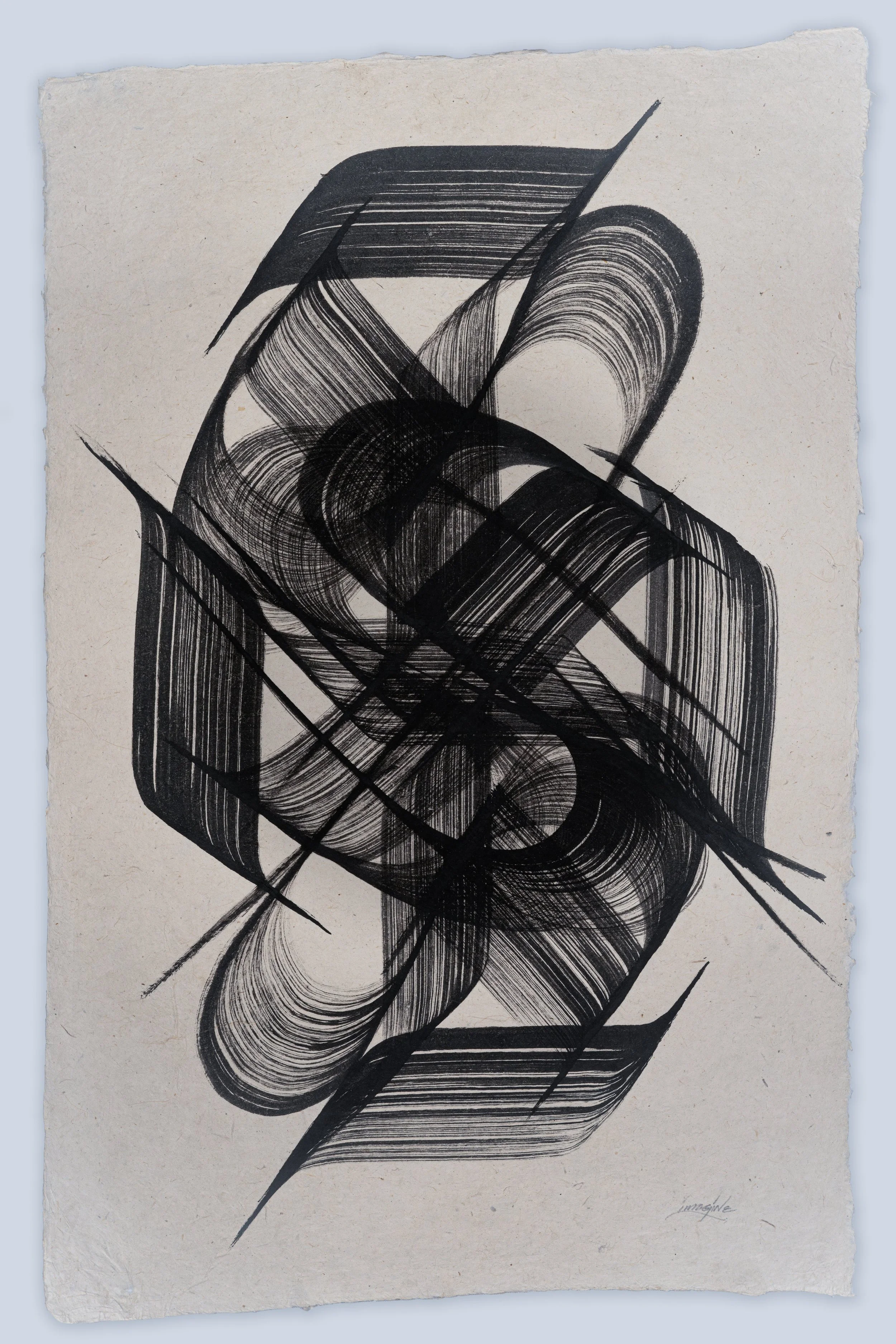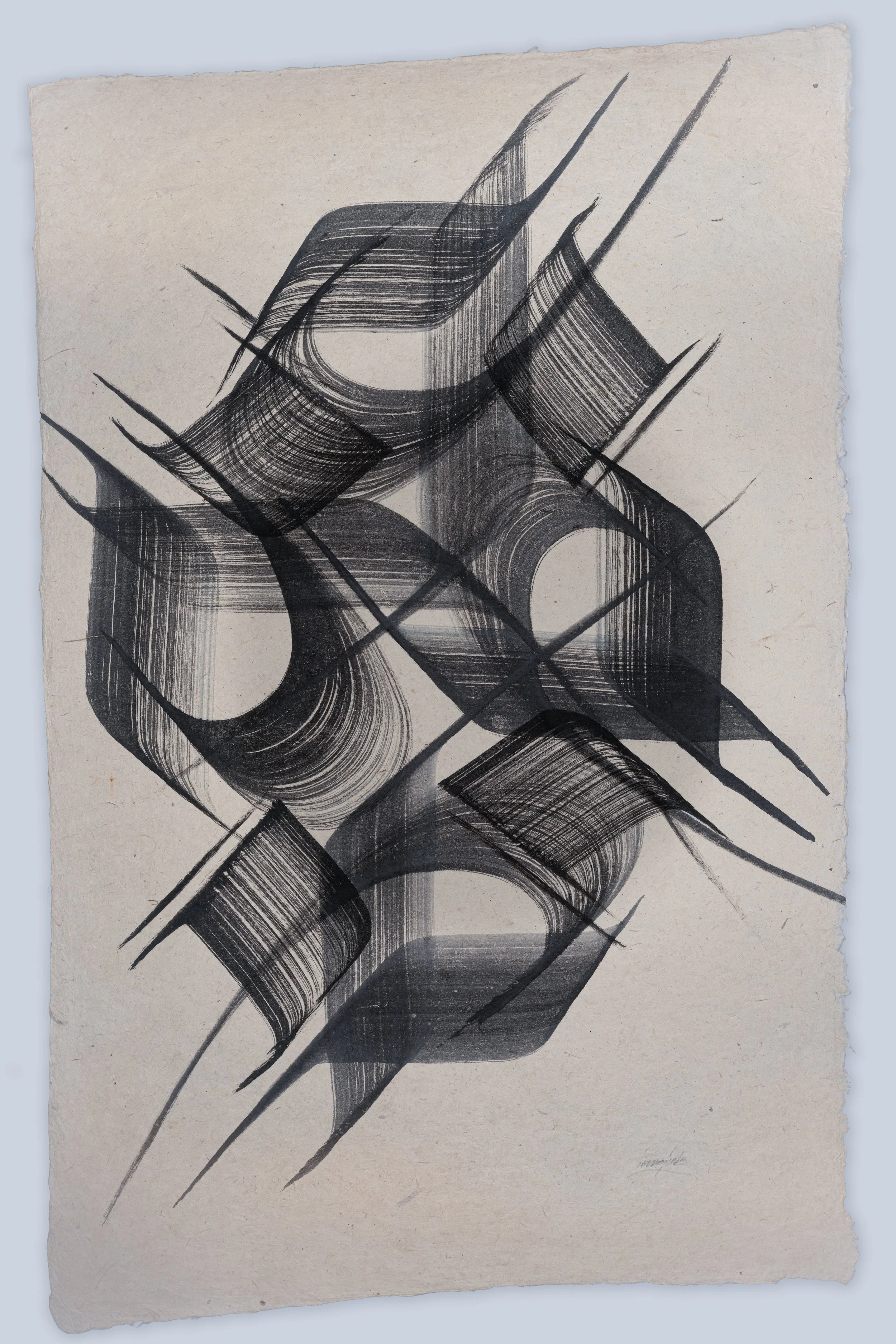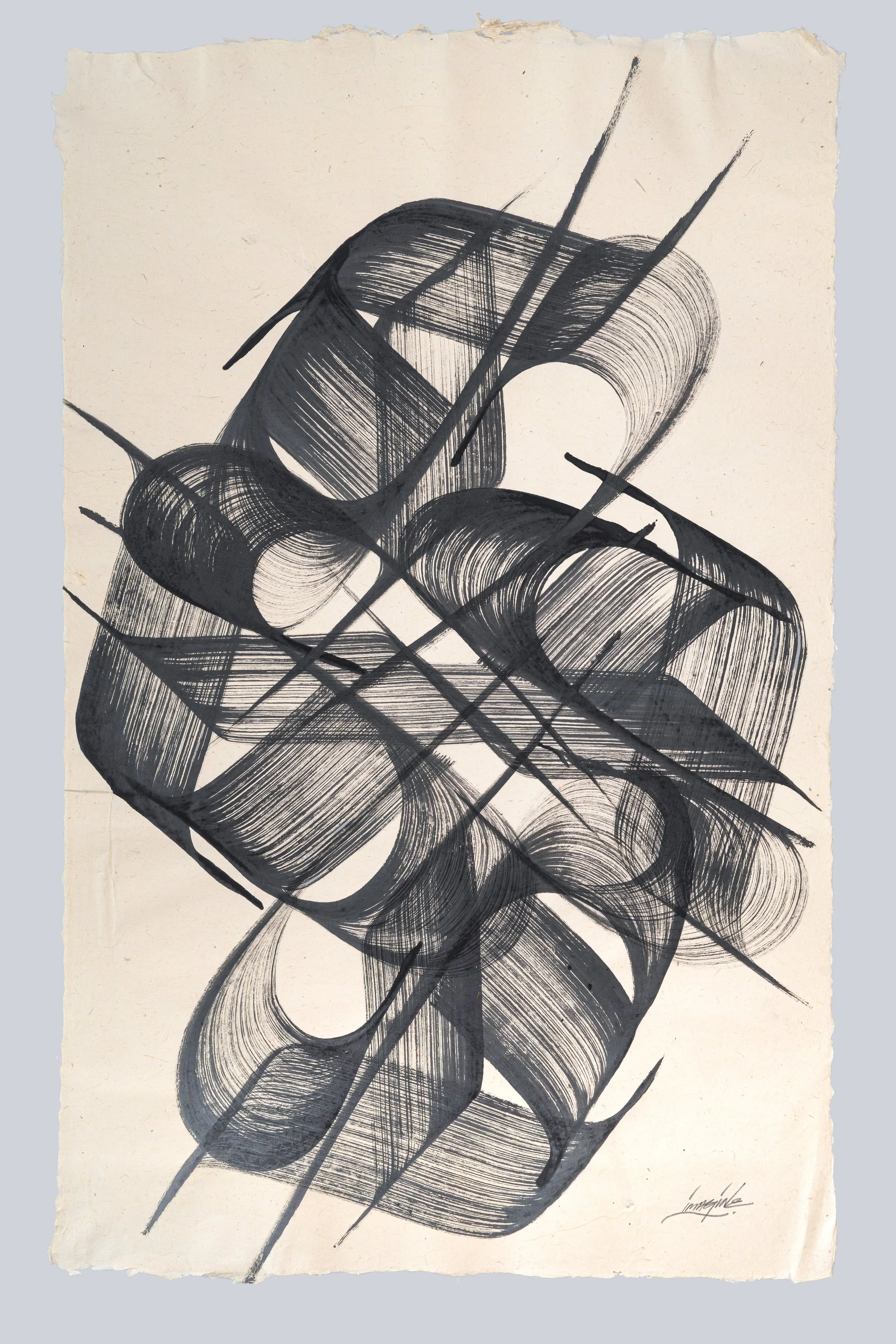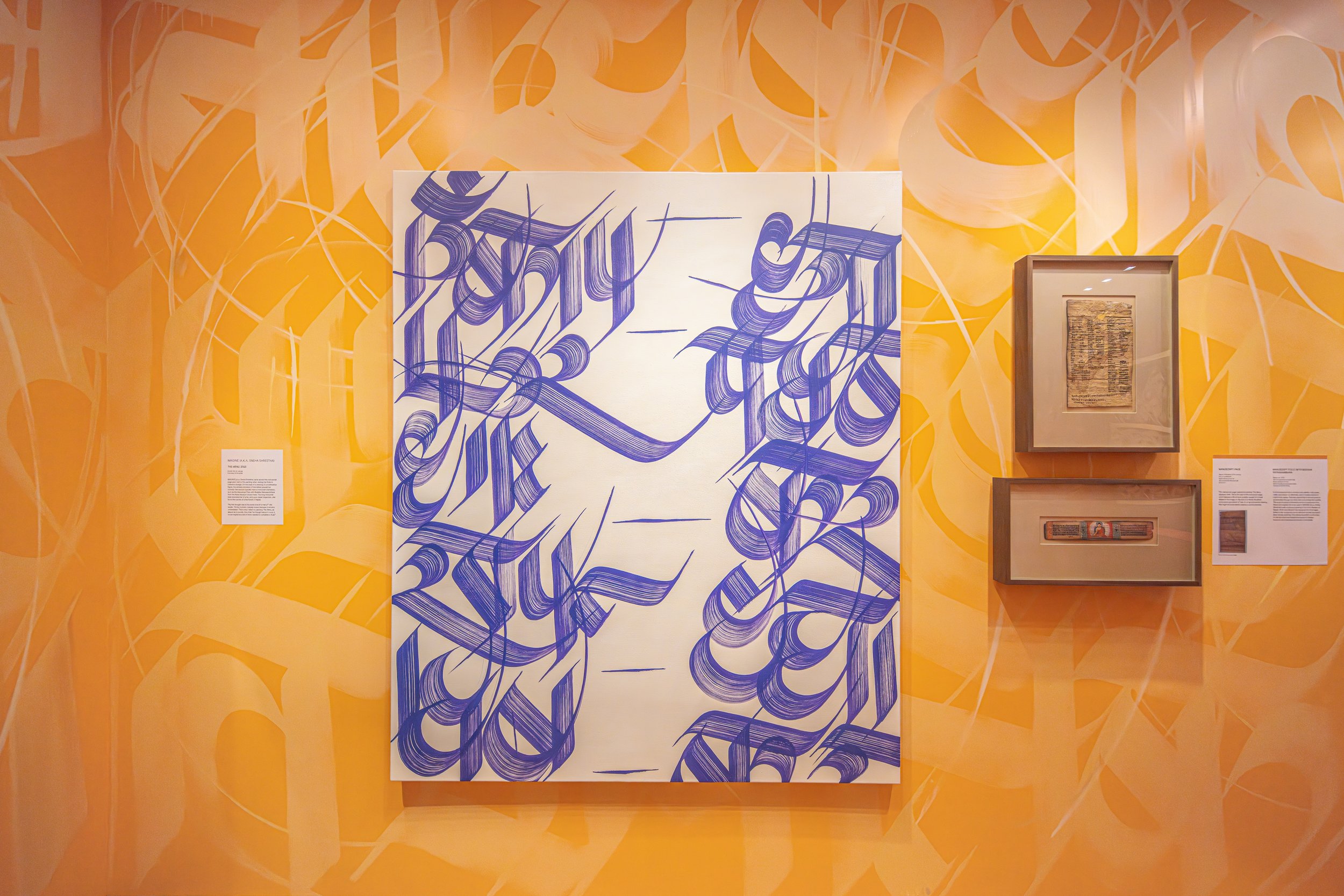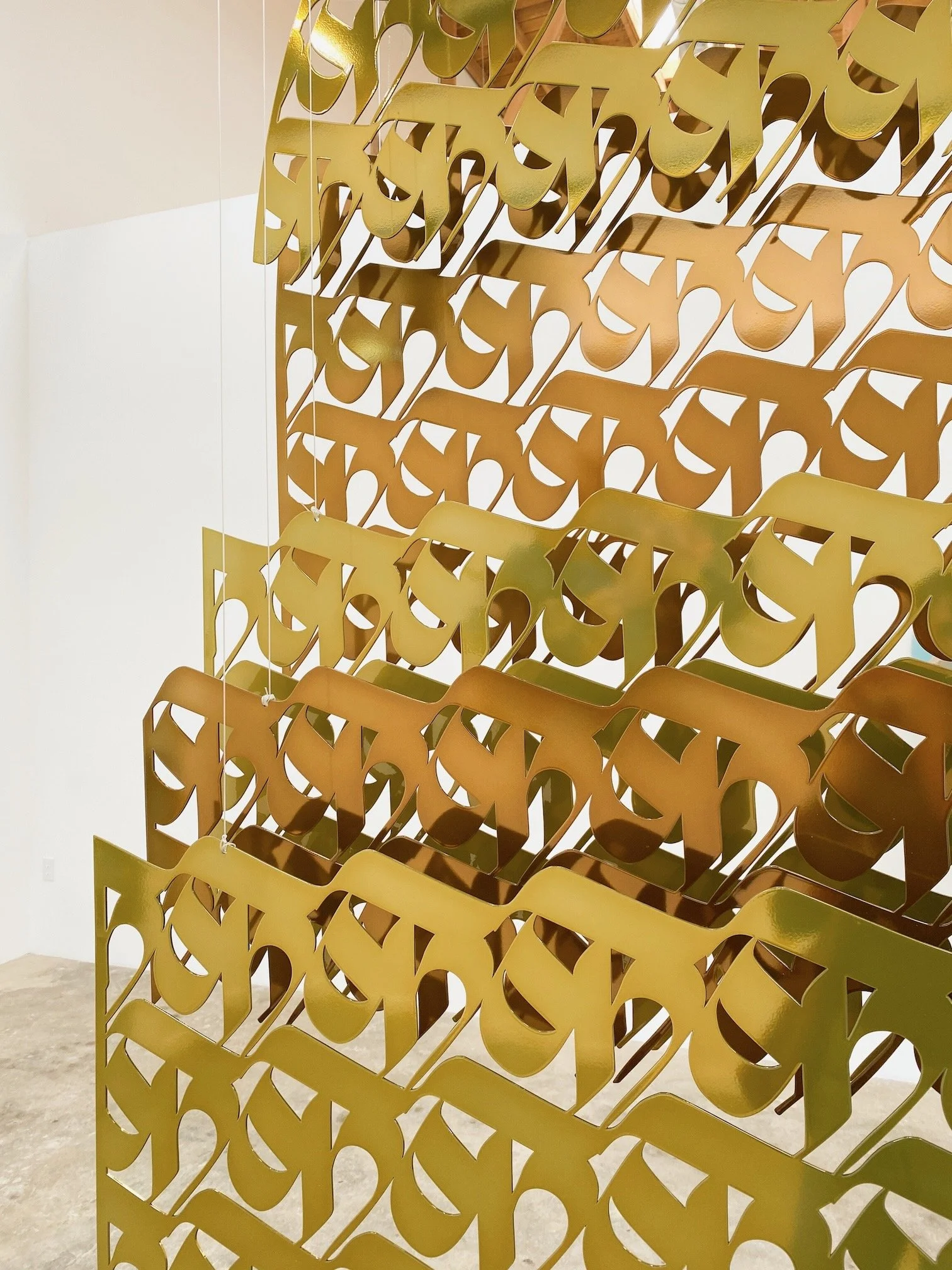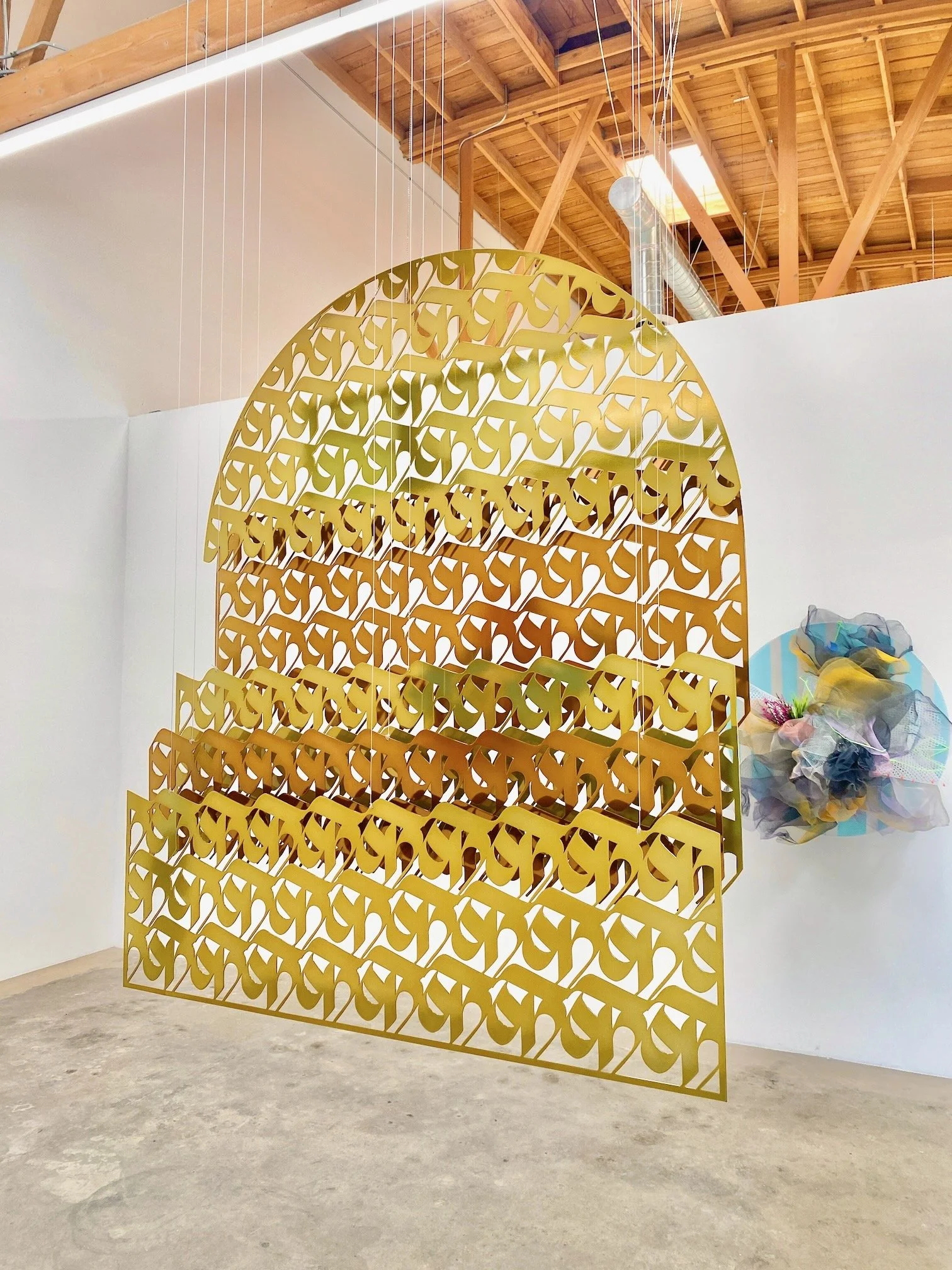SNEHA SHRESTHA AKA IMAGINE
AVAILABLE WORK
Sneha Shrestha aka Imagine is a Nepali artist who incorporates her native language and meshes the aesthetics of Sanskrit scriptures with graffiti influences. Her work moves fluidly between meditative canvases, large-scale murals, and public art projects, reflecting a deep connection to both tradition and experimentation.
Sneha’s work is currently on view at the Institute of Contemporary Art, Boston as part of the prestigious James and Audrey Foster Prize Award by the Institute of Contemporary Art, Boston, recognizing her significant contributions to contemporary art. The Harvard Art Museums has recently acquired her 7ft sculpture Dwarpalika and will be on view December 2025. Sneha is the first contemporary Nepali artist to be included in the Museum of Fine Arts, Boston’s Permanent Collection with her painting Home416. Her monumental sculpture, Calling the Earth to Witness, was commissioned by the Isabella Stewart Gardner Museum, adding another milestone to her evolving practice.
Among many public art projects, she is the artist behind the landmark mural on a building owned by MIT at the corner of Massachusetts Avenue and Main Street in Cambridge, MA. Her artwork can also be found in the collections of the Isabella Stewart Gardner Museum, the Davis Museum at Wellesley College, the Worcester Art Museum, Google, Facebook, and Fidelity.
Recent exhibitions include the solo show Ritual and Devotion, Cantor Arts Gallery, College of the Holy Cross (2024), and participation in the group exhibitions Deities of Nepal II, Nepal Arts Council (2024), and Reimagine: Himalayan Art Now, The Rubin Museum (2024), Wrightwood659 in Chicago (2024). In 2025, she will complete a public art sculpture in partnership with The Rubin Museum for New York City’s Department of Transportation.
Her additional honors include a grant from Collective Futures Fund funded by the Andy Warhol Foundation (2024); Artist of the Year Award by Center for Arts at the Armory (2023); inclusion in WBUR The ARTery’s 25 Millennials of Color (2019); recognition as one of the 100 most influential women in Nepal by the Nepal Cultural Council (2018); a Boston Artist-in-Residence Award (2018); the HUBWeek Change Maker Award (2018); South Asia and the Arts Fund Grant, Harvard University (2017); and Project Zero Artist-in-Residence Award, Harvard University (2017). She was also selected for a Studio Residency at the Boston Center for the Arts funded by the Wagner Foundation.
Sneha holds a Master’s degree from Harvard University and is a dedicated advocate for the arts. As the Arts Program Manager at Harvard’s Mittal South Asia Institute, she works to amplify Asian art and culture. In 2013, she founded Nepal’s first Children’s Art Museum, providing young people with creative spaces to grow and innovate.
At the heart of Sneha’s work is a commitment to community and cultural pride. Whether through her paintings, murals, or sculptures, she creates spaces where tradition meets bold expressions.
Celebration
Each of the paintings in this series reflects Shrestha’s immigration journey, which spanned over most of the artist’s life. They contain the names, written in Nepali, of some of the immigration forms that she needed to fill out. The letters are also superimposed within each canvas, signifying the repetitive nature of filling out these forms, which Shrestha likens to performing a meditative ritual. Through each painting’s palette, Shrestha comments on how the intense process also meant sacrificing time with her family; the colors represent those of the garments worn by her mother during celebrations and holidays that Shrestha missed at home in Kathmandu.
By emphasizing the challenges and difficulties of the immigration process, Shrestha also implies the resilience and courage it takes to go through it. She intends this series to be a celebration of immigrants and their journeys, which contrasts to the negativity and shame that is often associated with it.
Each work is $3,000 and sold in sets of two or more. The series was conceived as a collection, intended to be viewed in dialogue ideally in groups of three.
Building, 18"X14", Acrylic on Canvas, 2025
Another Classic, 18"X14", Acrylic on Canvas, 2025
Strength in Confidence, 18"X14", Acrylic on Canvas, 2025
A Classic, 18"X14", Acrylic on Canvas, 2025
*SOLD* Sky and Subtleties, 18"X14", Acrylic on Canvas, 2025
Taking Risks, 18"X14", Acrylic on Canvas, 2025
Unique Thought Process, 18"X14", Acrylic on Canvas, 2025
*SOLD*: Open Minds, 18"X14", Acrylic on Canvas, 2025
Peaceful Moment, 18"X14", Acrylic on Canvas, 2025
Important Complications, 18"X14", Acrylic on Canvas, 2025
*SOLD* Tihar Festival of Lights, 18"X14", Acrylic on Canvas, 2025
Graduation, 18"X14", Acrylic on Canvas, 2025
Strong and Clear, 18"X14", Acrylic on Canvas, 2025
Festivities, 18"X14", Acrylic on Canvas, 2025
A Wedding, 18"X14", Acrylic on Canvas, 2025
*SOLD*: More to Cherish, 18"X14", Acrylic on Canvas, 2025
*SOLD*: Abundance, 18"X14", Acrylic on Canvas, 2025
Sky and Subtleties 2, 18"X14", Acrylic on Canvas, 2025
Simple Delights, 18"X14", Acrylic on Canvas, 2025
*SOLD* Confidence, 18"X14", Acrylic on Canvas, 2025
Important Complications 2, 18"X14", Acrylic on Canvas, 2025
Favorite Intervals , 18"X14", Acrylic on Canvas, 2025 Note: $1000
Continue to Persist, 18"X14", Acrylic on Canvas, 2025 Note: $1000
Unknown Availability, 18"X14", Acrylic on Canvas, 2025 Note: $1000
Devi (Goddess)
This large-scale series, considered a subset of the Celebration series nearby, examines the challenges of immigration and its process. It is a comment on the artist sacrificing time with her family, who still resides in Kathmandu, and missing celebrations, such as birthdays, festivals, and religious holidays. Each work contains the names, written in Nepali, of some of the forms Shrestha needed to complete for her immigration process. These names are arranged to allude to a shrine or the gold decorations used during religious festivals. At the top of each painting’s composition is a chandrama, a symbol of an upturned, crescent moon with a circle in its center that is drawn during auspicious occasions.
The series also serves as a dedication to her mother; Devi (“goddess” in Sanskrit) is her mother’s middle name. The colors of each painting are drawn from those in the clothing worn by Shrestha’s mother during Tihar, the Nepali version of the five-day Hindu festival of Diwali. The large, gold strokes signify her mother’s tenacious energy, which the artist channeled during her immigration process. Their expanse beyond the canvases conveys the energy’s boundlessness while also serving as a nod to the colossal presence of Shrestha’s multi-story mural paintings.
*Sold* Devi 4 Acrylic ink on canvas 40" x 30" $5,000.00
*Sold* Devi (Goddess) 9, 2023 Acrylic on canvas 6' x 5' $15,000.00
Nepali Alphabet
These paintings acknowledges Shrestha’s work as a muralist. They specifically refer to her mural, For Cambridge, With Love from Nepal (2018), a sixty-foot-tall work that is in Central Square, Cambridge, MA. The paintings act as close-ups of the mural, providing a more intimate experience with the larger-than-life work, as well as the opportunity to appreciate, through every curve and angle, the beauty of Devanagari script. Each painting features one to two Nepali letters, such as “ka” (क), “kha” (ख), and “ga” (ग), which are executed with the same tools the artist uses when painting her murals, including an eight-inch-wide brush.
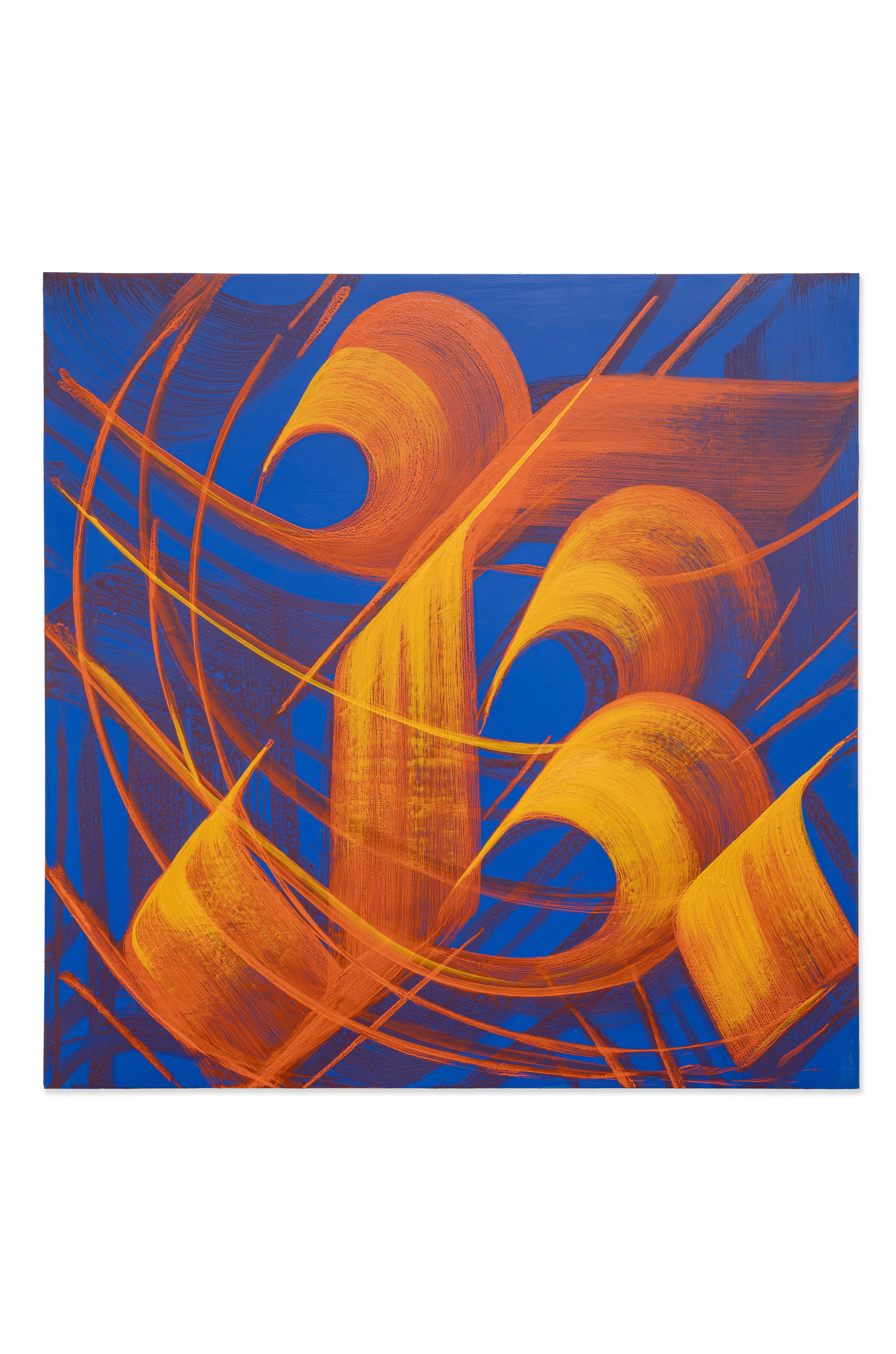
*Sold* Nepali Alphabet 3, 2023 Acrylic ink on canvas 30" x 30" $4,000.00
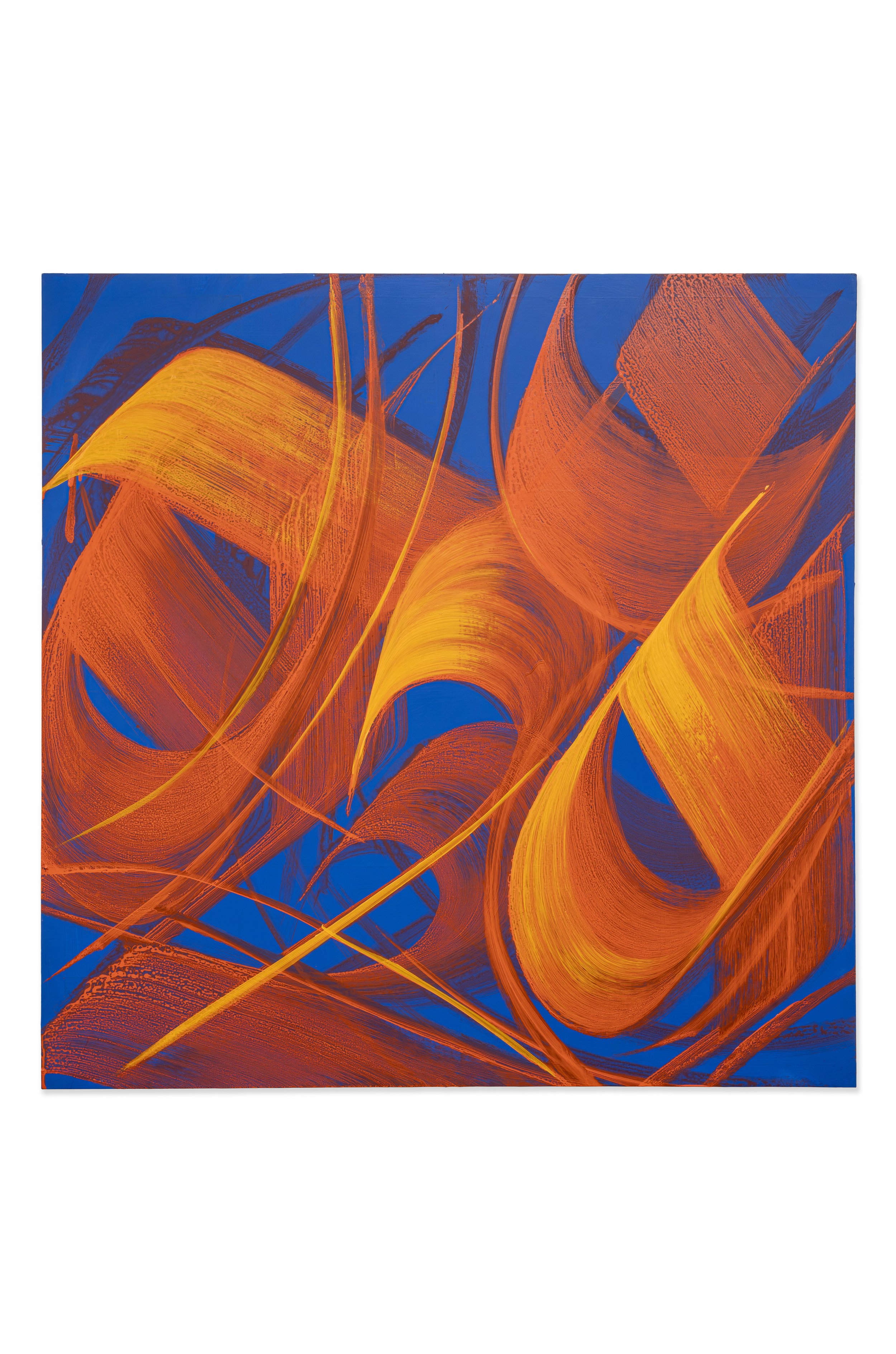
*Sold* Nepali Alphabet 1, 2023 Acrylic ink on canvas 30" x 30" $4,000.00
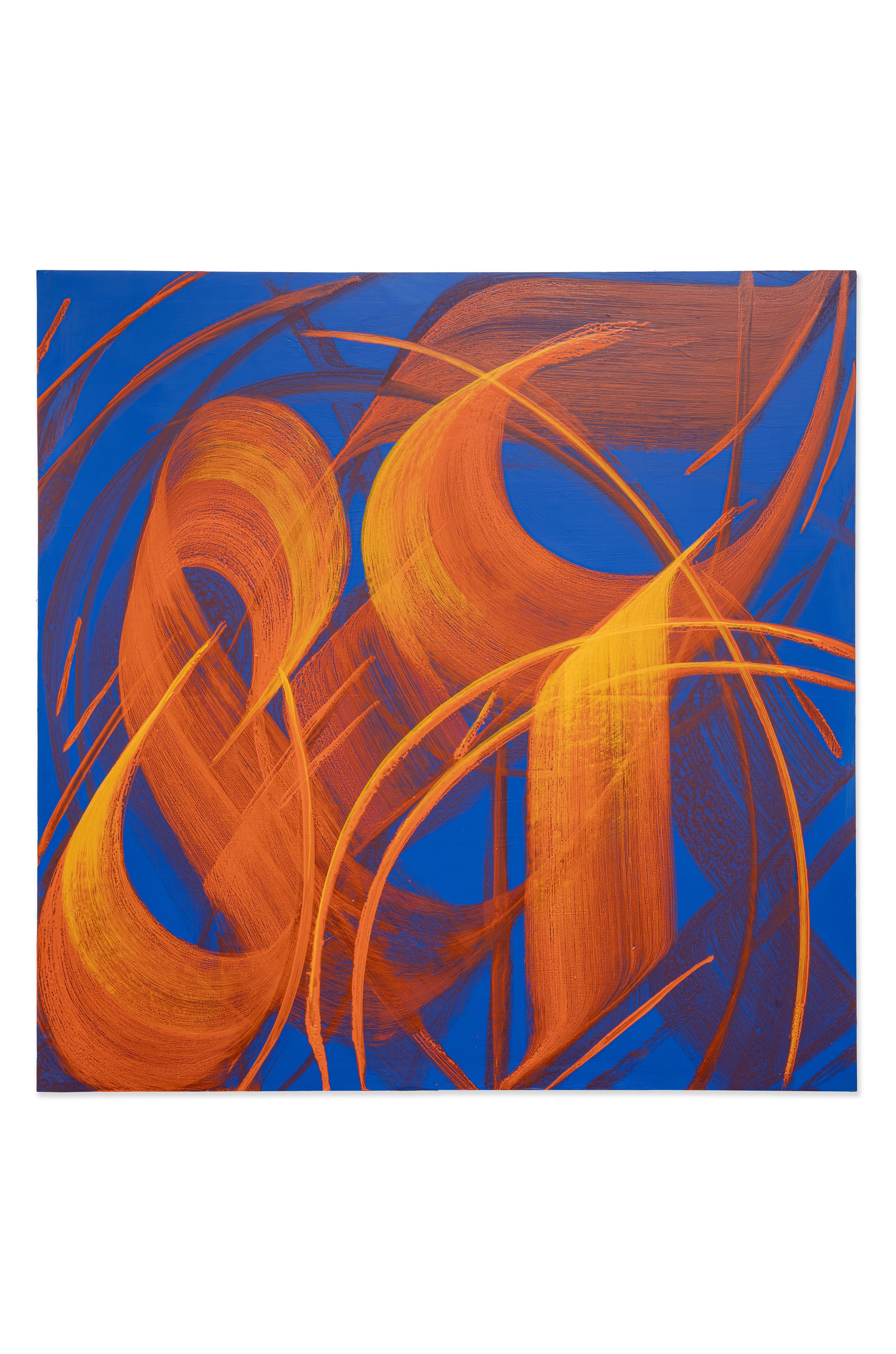
*Sold* Nepali Alphabet 4, 2023 Acrylic ink on canvas 30" x 30" $4,000.00

*Sold* Nepali Alphabet 5, 2023 Acrylic ink on canvas 30" x 30" $4,000.00
Home, Too
Inspired by my Home series, I have been painting these lettering patterns doing them again and again to make them balanced without any measurements or guidelines. The symmetry simply depends on the precision of my brush strokes and I regulate my breath to achieve this.
The paper I’m painting these on is very special to me. I brought them from Nepal from a paper store in the old part of Kathmandu where my dad grew up. The roads aren’t wide enough for cars so me and my dad went on his motorbike and carried the roles of paper on the back of the bike.
A bit of a scary ride back home but my dad supported me on this venture and it was special trip we made. It was really worth it especially given that I haven’t been able to see my dad for a year and a half due to COVID.
I have a limited stack of this paper and I know I won’t always get this paper the same way forever. I am thinking about how this piece came to be and the journey it took. Of course, I’m thinking of home some more and the objects I collected with my father.
Deed sketch 1, 2022 Ink on handmade Nepali paper 30" x 20" Sold
Deed Sketch 2, 2022 Ink on handmade Nepali paper 30" x 20" $3,000 (unframed); $3,500 (framed)
Untitled Deed 11, 2020 Ink on handmade Nepali paper 30" x 20" $3,000 (unframed); $3,500 (framed)
*ON HOLD* Deed 2, 2022 Ink on handmade Nepali paper 30" x 20"
Untitled 11, 2020 Ink on handmade Nepali paper 30" x 20" $3,000 (unframed); $3,500 (framed)
Untitled 1, 2020 Ink on handmade Nepali paper 30" x 20" $3,000 (unframed); $3,500 (framed)
Untitled, 2020 Ink on handmade Nepali paper 30" x 20" Sold
Untitled 2, 2020 Ink on handmade Nepali paper 30" x 20" $3,000 (unframed); $3,500 (framed)
Untitled 8, 2020 Ink on handmade Nepali paper 30" x 20" $3,000 (unframed); $3,500 (framed)
Untitled 1, 2020 Ink on handmade Nepali paper 30" x 20" $3,000 (unframed); $3,500 (framed)
Untitled 3, 2020 Ink on handmade Nepali paper 30" x 20" $3,000 (unframed); $3,500 (framed)
Untitled 7, 2020 Ink on handmade Nepali paper 30" x 20" $3,000 (unframed); $3,500 (framed)
My Ancestors' Voice, 2023 Acrylic ink on canvas 60" x 144" $40,000
The Meniu, 2023 Acrylic ink on canvas 72" x 60" $14,000
Apsara
This work is inspired by different architectural elements that can be found throughout Shrestha’s hometown of Kathmandu. The title refers to female divine beings that guard the entrances to Nepali temples. The arched shape resembles the doorways of these revered and sacred spaces, while the patterned composition alludes to a jali, a type of window distinct to South Asia that is notable for its pierced and latticed screen. The openings allow for light and air to pass through while the structure shields from elements like the harsh sun and rain. In Nepal, it is known as an ankhi jhyal (“window for the eye”). Here, to create the lattice, Shrestha repeats the first letter of the Nepali alphabet, “ka” (क). Like her murals, Shrestha’s sculptures play with surfaces and patterns to transform the space they are created for.
The metallic finish of the sculpture alludes to the final process of bronze casting, which is to highly polish a work so that it resembles gold. It is a technique that is used in the creation of statues of Hindu deities and Buddhas across South Asia, which can be found in homes, storefronts, and temples, as well as Nepali shrines and temple architecture. Gold also has personal meaning for Shrestha, as it reminds her of her mother and the jewelry she wears, in addition to the artist’s iconic gold necklace featuring her mother’s name.

